
Editorial Board of “Holistic Marketing Management”
(A refereed journal published four times annually by the School of Management-Marketing of the Romanian-American University)
Editor-in-Chief
Theodor Valentin PURCĂREA
Bernd HALLIER
John SAEE
President of European Retail Academy; President of EuCVoT; Member of the Astana Economic Scientists Club; Former Managing Director EHI Retail Institute, Germany, Chairman of the Advisory Board of EuroShop, Chairman of the Board of the Orgainvent, Trustee of EHI Retail Institute at GLOBALG.A.P.
President - Association of Global Management Studies (USA); Editor-in-Chief, JournalofEntrepreneurshipandSustainabilityIssues &FormerEditor-in-Chief, Journal of Management Systems, USA; Australian Graduate School of Entrepreneurship, the Facultyof Business and Enterprise, Swinburne University of Technology; Member of France’s National Academy of Scientific Research (CNRS); Director - ESB International Teaching and Research Exchanges, Reutlingen University, Germany
John L. STANTON
Professor of Food Marketing, Erivan K. Haub School of Business, Saint Joseph’s University Philadelphia, USA; Director, Institute of Food Products Marketing, Editor, Journal of Food Products Marketing; Hall of Fame of the European Retail Academy, Honored Personality 2016
Léon F. WEGNEZ
William PERTTULA
Levent ALTINAY
Andrew KILNER
Secretary General, International Association of the Distributive Trade, AIDA Brussels; Member of France’s Academy of Commercial Sciences; Doctor Honoris Causa of NUPSPA (SNSPA) Bucharest; Hall of Fame of the European Retail Academy, Honored Personality 2015; Administrator Secretary General of the Diplomatic Club of Belgium
Internet Marketing Professor, College of Business, San Francisco State University, USA
Professor of Strategy and Entrepreneurship, Research Area Leader, Oxford School of Hospitality Management, Faculty of Business, Oxford Brookes University, UK
First MBA Director at the Rennes Graduate School of Business in France; Director of RAFME Research into Management Excellence; PhD (Cambridge), MBA (City, London)
Dana ZADRAZILOVA Faculty of International Economic Relations, University of Economics, Prague, Czech Republic
Riccardo BELTRAMO University of Turin, Italy
Sinisa ZARIC University of Belgrade, Yugoslavia
Gabriela SABĂU Memorial University, Grenfell Campus, Corner Brook, Canada Hélène NIKOLOPOULOU University of Lille 3, France
Vasa LÁSZLÓ Szent Istvan University, Hungary
Peter STARCHON Comenius University in Bratislava, Slovakia
John MURRAY Faculty of Business, Dublin Institute of Technology, Ireland
Holistic Marketing Management 1
Kamil PÍCHA
Faculty of Economics, University of South Bohemia in Ceske Budejovice
Irena JINDRICHOVSKA Deputy Head of Department of Business Economics, University of Economics and Management, Prague, Czech Republic
Norbert HAYDAM Faculty of Business, Marketing Department, Cape Peninsula University of Technology, South Africa
Hans ZWAGA Kemi-Tornio University of Applied Sciences, Finland
Roxana CODITA Technische Universität München, TUM School of Management
Valeriu IOAN-FRANC
Corresponding Member of the Romanian Academy, General Deputy Director, National Institute for Economic Research “Costin C. Kiriţescu”, Romanian Marketing Association; Romanian Distribution Committee
Dumitru MIRON Academy of Economic Studies in Bucharest, President of RAFPEC (FRAPEC)
Iacob CĂTOIU Academy of Economic Studies in Bucharest
Virgil BALAURE Academy of Economic Studies in Bucharest
Gheorghe ORZAN Academy of Economic Studies in Bucharest
Luigi DUMITRESCU Lucian Blaga University of Sibiu
Marius D. POP Babes-Bolyai University, Cluj-Napoca
Constantin ROŞCA President of Romanian Scientific Society of Management - SSMAR
Petru FILIP Dimitrie Cantemir University, Bucharest
Ion VOICU SUCALA
Technical University of Cluj-Napoca, Management and Economic Engineering Department; University of Glasgow, UK, College of Social Sciences, School of Social & Political Sciences; Managing Editor, Review of Management and Economic Engineering
Virgil POPA Valahia University of Târgovişte
Alexandru NEDELEA Ştefan cel Mare University of Suceava
Olguța Anca ORZAN Carol Davila University of Medicine and Pharmacy Bucharest
Ana-Maria PREDA Romanian-American University
Ovidiu FOLCUȚ Romanian-American University
Doinița CIOCÎRLAN Romanian-American University
Costel NEGRICEA Romanian-American University
Tudor EDU Romanian-American University
Alexandru IONESCU Romanian-American University
Andreea Elisabeta BUDACIA Romanian-American University
Marius Dan DALOTĂ Romanian-American University
Mihai PAPUC Romanian-American University
Gheorghe ILIESCU Romanian-American University
Oana PREDA Romanian-American University
Olga POTECEA Romanian-American University
Nicoleta DUMITRU Romanian-American University
Monica Paula RAȚIU Romanian-American University
Alexandra PERJU-MITRAN Romanian-American University
Associate Editors
Dan SMEDESCU Irina PURCĂREA Art Designer Director Alexandru BEJAN
Holistic Marketing Management 2
Contents
“Holistic Marketing Management”
(A refereed journal published four times annually by the School of Management-Marketing of the Romanian-American University) Volume 12, Issue 4, Year 2022

Theodor PURCĂREA - Brand as an Important Source of Power, and Risk Culture in Dealing with Organization’s Most Pressing Issues 4
Valentin-Marius STOICA and Tudor EDU - Researching the Behavioral Elements of Online Video Game Players. A Detailed Analysis Using SPSS.
Part II: Analysis of company’s marketing environment.....................11
Bernd HALLIER and Violena Nencheva - Textile Business as an Innovator: But Challenged by Global External Factors 21 Ioa
Holistic Marketing Management 3
Development
Science and Inspirations’: Overcoming Marketing Challenges...................................................................................................54
for the contents
the scientific
the
materials
n Matei PURCĂREA - E-Commerce
and Entering the Path to NeXT Commerce 40 Dan SMEDESCU - ‘Marketing
The responsibility
of
and
authenticity of the published
and opinions expressed rests with the author.
Editorial: Brand as an Important Source of Power, and Risk Culture in Dealing with Organization’s Most Pressing Issues
In our last HMM Editorial we made reference, among other aspects, to: a new rich conversation between Professor Costel Negricea, Rector of the Romanian-American University (RAU), and his old and great Friend the distinguished Professor John L. Stanton, Chairman & Professor of Food Marketing, Saint Joseph’s University, Philadelphia, U.S.; Gartner’s focus on the imperative of CMOs’ preparation for uncertainty; a new report by Adverity regarding what’s the CMO’s roadmap”; a McKinsey’s analysis of how to build resilience to grow in today’s economic turbulence at the confluence of crises and disruptions; an update of the BrookingsFinancial Times TIGER indexes (Purcarea, 2022)
On December 14, 2022, the Romanian-American University (RAU) and the National School of Political and Administrative Studies (SNSPA) concluded a collaboration agreement for a period of 20 years (a partnership based on the principles of university autonomy) RAU Rector, Professor Costel Negricea, and SNSPA Rector, Professor Remus Pricopie, signed the collaboration agreement between the two reputed universities, a document that establishes the necessary framework for cooperation on topics of common interest for both academic communities (https://www.rau.ro/acord-de-colaborare-institutionala-intre-ura-si-snspa-pentrudezvoltarea-unor-proiecte-de-succes/) It is worth remembering that the distinguished Professor
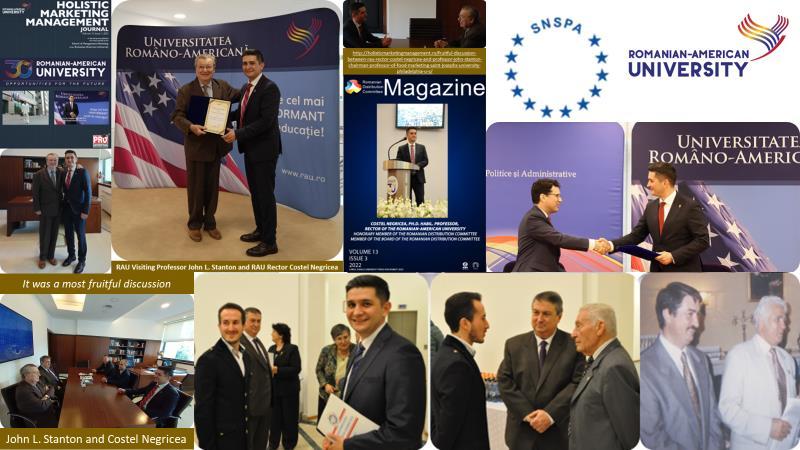
Holistic Marketing Management 4
In the opinion of Stanford Graduate School of Business Professor Jeffrey Pfeffer (London, 2022), brand is an important source of power (Pfeffer defining power “as the ability to get things done your way in contested situations”), together with other sources (like control over resources, social relationships or how you show up), and to do what is required to do it is necessary to bring the parts of yourself (intellectual, physical, and emotional aspects, A/N) to work. On the other hand:
- As reported recently by DoubleVerify (2022), as consumers demand accountability on both misinformation, and disinformation brand values are considered essential;
- As highlighted by Keller (2013): “Branding creates mental structures and helps consumers organize their knowledge about products and services in a way that clarifies their decision making and, in the process, provides value to the firm. The key to branding is that consumers perceive differences among brands in a product category. These differences can be related to attributes or benefits of the product or service itself, or they may be related to more intangible image considerations;”
- As shown by Booth (2022), it is important to act on what you understand (emotional intelligence) of both your own emotions, and the emotions of those people who are physically near you;

Holistic
5
Marketing Management
Léon F. Wegnez (a Member of the Editorial Board of the “Holistic Marketing Management” Journal) is Doctor Honoris Causa of SNSPA.
- As underlined by McKinsey’s representatives (Birshan et al., 2022): “Driving sustainable, inclusive growth requires the right mindset, strategy, and capabilities… The clarity of purpose and vision that comes from choice is what helps leaders and their teams believe in the seemingly impossible and make it happen.”
From the point of view of the risk culture across an organization it is recommendable (Vieira, F. and Agua, P.B., 2022) to consider a holistic framework keeping simultaneously in perspective not only the whole organization, but also the individual and the team, so as to diminish the blind spots’ probability (assessing the risk threshold from all three above-mentioned distinct domains). What presupposes to take into account both the mind bias and personality impacting the risk approach, and the specific strategies to handle the various particularities of a business, a relevant market, or an industry (see the figure below). The potential model proposed by the distinguished Professors from AESE Business School Lisbon and the Portuguese Naval Academy for approaching risk governance deserves to be considered by board members when handling the company’s most pressing issues.
Figure no. 1: A sample of common the mind biases impacting the risk approach, and examples of strategies to address risks
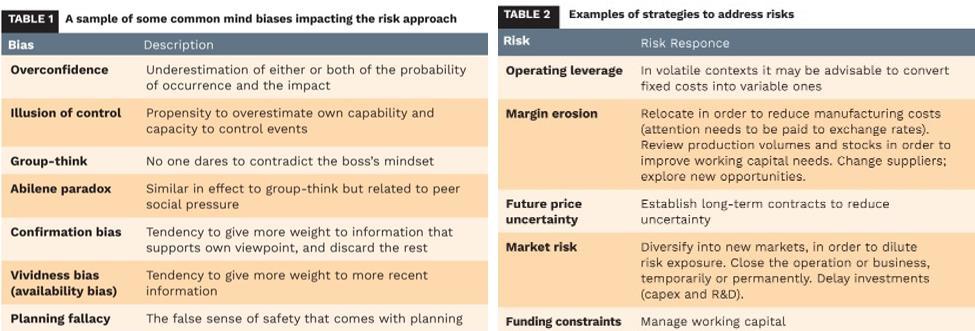
Source: Adapted from Vieira, F. and Agua, P.B., 2022. Approaching Risk From the Boardroom, European Business Review, November 22, 2022. (Work cited)
Of course, there is no doubt about the need of getting comfortable with the discomfort zone by better understanding the scientific method, the different thought processes’ confluence, the new data availability, inquiring and arguing (Chui and Seth, 2022). And it is imperative to shift the perspective on uncertainty, considering its new emerging dimensions (see the first figure below), and valorizing the potential of creativity and cooperation, going beyond the inability to act (Conceição, 2022) With regard to uncertainty (and also other significant keywords), it is also useful to look at the relevant and valuable information (the big picture entitled “What CEOs talked about in Q3 2022 (vs Q2 2022)”, see the next figure below) shared recently by the Cofounder and CEO of research firm CB Insights (Sanwal, 2022).
Holistic Marketing Management 6
Figure no. 2: A sample of common the mind biases impacting the risk approach, and examples of strategies to address risks
Source: Conceição, P., 2022. Human development in an age of uncertainty, The Brookings Institution, November 4, 2022 (Work cited)
Figure no. 3: What CEOs talked about in Q3 2022 (vs Q2 2022)
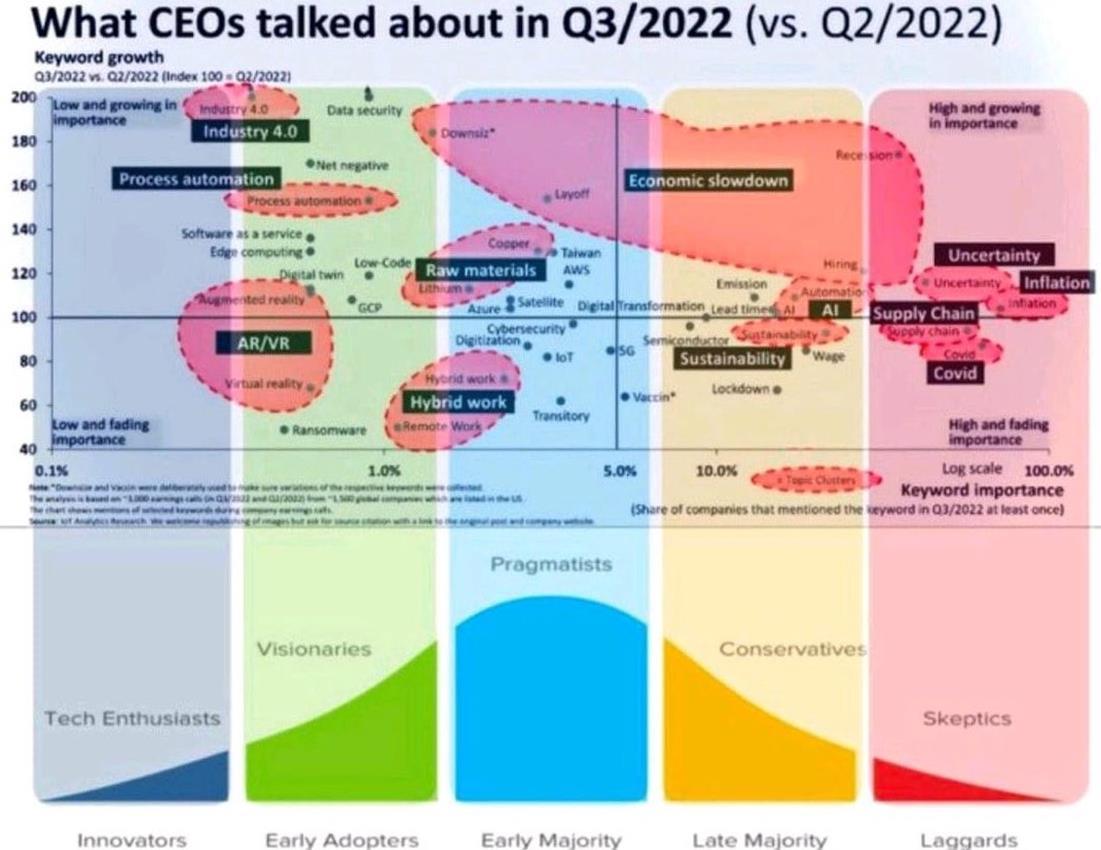
Source: Sanwal, A., 2022. tiktok > facebook, The CB Insights newsletter, 09.12.2022 03:51, The +1 (Work cited)
It is also interesting to note that a recent discussion paper by McKinsey Global Institute highlights that CEOs feel doubt about how the future will unfold, taking the current turbulence in supply chains, economies, and geopolitics into consideration, global integration in today’s
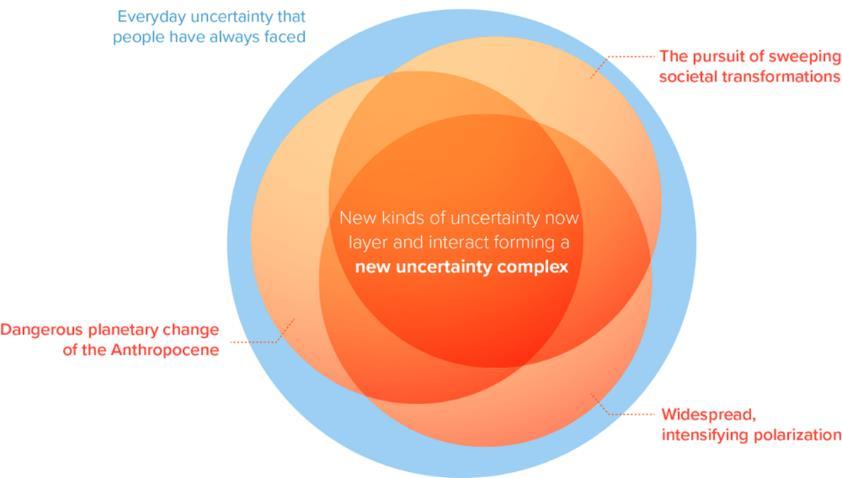
Holistic Marketing Management 7
interconnected world being driven by global flows linked to both knowledge, and know-how, as shown in the figure below
Figure no. 4: Global flows in an interconnected world
Source: McKinsey Global Institute, 2022. Global flows: The ties that bind in an interconnected world. [pdf] Discussion paper, November 2022, p. V (Work cited)
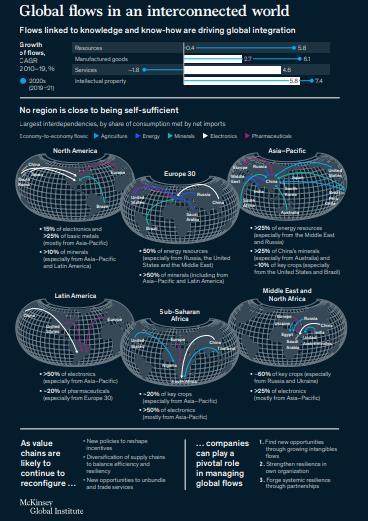
Holistic Marketing Management 8
In the opinion of York University Management Professor David Weitzner (also, author of the book “Connected Capitalism”): “Today’s business leaders have a stark choice: Co-create or manage, because we cannot do both. ” On the other hand, according to David Schonthal (2022), Clinical Professor of Strategy, Kellogg School of Management at Northwestern University: “Customers can’t always tell you what they want, but they can most certainly tell you what they are hoping to accomplish. This is much easier to do when we pay attention to functional, social, and emotional value, understand the “why” behind the “what,” and reduce the friction that almost always stands in the way of adoption.”
Speaking about marketers’ top five priorities and challenges Salesforce (2022), brought to our attention, among other aspects, that marketers don’t know what to do with such amount of data created by the growth of marketing technology (sharing and implementing the resulting data being essential), underlining both the advantages (much greater precision in targeting customers with personalized experiences), and disadvantages (ensuring personalized customer experience without stepping outside the ethical line). Within this framework, it was pointed out the organizational imperative of ensuring the necessary visibility into data for all its various departments, so as to create value with the help of technology investments Without forgetting, of course, that the key enablers for digital risk management are data, analytics, and IT architecture, as shown by McKinsey’s representatives (Ganguly et al., 2017), who also underlined that: “The organization and operating model will require new capabilities to drive rapid digitization… Governance processes must enable nimble responses to a fast-moving technological and regulatory environment. ”
Allow us to end by making reference to some ideas expressed recently by a Gartner’s representative, Judy Pasternak, at the beginning of her Letter From the Editor (Gartner, 2022): “The world economy has been through a lot recently And now we come to the most peculiar stage of all. A triple squeeze of sustained inflation, a still-robust talent market and continued supply chain disruption places new limits on executive leaders as we head into recessionary times. Through the cooling and the contradictions, keep an eye on two important constituent groups: customers and employees.”
Theodor Valentin Purcărea Editor-in-Chief
References
Birshan, M., Cvetanovski, B., Doherty, R., Freundt, T., Gaeta, A., Kelly, G., Roth, E., Seth, I. and Zucker, J., 2022. Choosing to grow: The leader’s blueprint. [pdf] McKinsey & Company, Growth, Marketing & Sales Practice, July 7, 2022, pp. 1, 10. Available at: <choosing-to-grow-the-leaders-blueprint> [Accessed 8 July 2022].
Booth, B.E., 2022. Emotional Intelligence Is Key to Strong Leadership. Here’s How to Sharpen Yours, Kellogg Insight, Kellogg School of Management at Northwestern University, Dec. 4, 2020. [online] Available at: <https://insight.kellogg.northwestern.edu/article/emotional-intelligence-strong-leadership?> [Accessed 11 December 2022].
Holistic Marketing Management 9
Chui, M. and Seth, J., 2022. Forward Thinking on the meeting point of science and humanity with Jayshree Seth. [pdf] McKinsey Global Institute, November 2022, pp. 9-10. Available at: <forward-thinking-on-the-meeting-point-of-science-and-humanity-withjayshree-seth> [Accessed 7 December 2022].
Conceição, P., 2022. Human development in an age of uncertainty, The Brookings Institution, November 4, 2022. [online] Available at: <https://www.brookings.edu/blog/future-development/2022/11/04/human-development-in-an-age-of-uncertainty/?> [Accessed 5 December 2022].
DoubleVerify, 2022. Four Fundamental Shifts in Advertising and Media Report, Report, 11/14/2022. [online] Available at: <https://doubleverify.com/four-fundamental-shifts-in-advertising-and-media-report-2022/?> [Accessed 19 November 2022].
Ganguly, S., Harreis, H., Margolis, B. and Rowshankish, K., 2017. Digital risk: Transforming risk management for the 2020s. [pdf] McKinsey & Company, Risk, February 2017, p. 2. Available at: <digital-risk-transforming-risk-management-for-the2020s> [Accessed 18 December 2022].
Gartner, 2022. Winning in the Weird Economy. [pdf]Gartner Business Quarterly, Fourth Quarter 2022, Proven Guidance for CSuite Action. Available at: <gartner_business_quarterly_4q22> [Accessed 8 December 2022].
Keller, K.L., 2013. Strategic Brand Management, 4th Edition, Pearson Education, Inc., p. 36.
London, S., 2022. Author Talks: Rules of power from Jeffrey Pfeffer to help you get your way, McKinsey & Company, December 2, 2022. [online] Available at: <https://www.mckinsey.com/featured-insights/mckinsey-on-books/author-talks-rulesof-power-from-jeffrey-pfeffer-to-help-you-get-your-way?> [Accessed 6 December 2022].
McKinsey Global Institute, 2022. Global flows: The ties that bind in an interconnected world. [pdf] Discussion paper, November 2022, pp. V, 20, Available at: <global-flows-the-ties-that-bind-in-an-interconnected-world-vfinal> [Accessed 5 December 2022].
Purcarea, T., 2022. Marketing Strategy to Navigate the Current Uncertain Landscape, Advancing on the Path to the Next Frontier of Resilience, Holistic Marketing Management, vol. 12(3), pp. 04-07, October.
Salesforce, 2022. Marketing trends are reshaping how we connect with customers, Insider Intelligence, Dec 7, 2022. [online] Available at: <https://www.insiderintelligence.com/content/marketing-trends-reshaping-how-connect-with-customers-sponsoredcontent?> [Accessed 8 December 2022].
Sanwal, A., 2022. tiktok > facebook, The CB Insights newsletter, 09.12.2022 03:51, The +1.
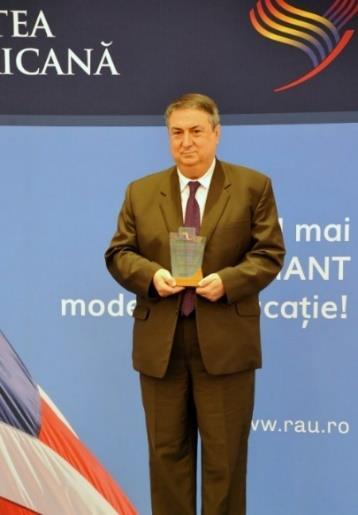
Vieira, F. and Agua, P.B., 2022. Approaching Risk From the Boardroom, European Business Review, November 22, 2022. [online] Available at: <https://www.europeanbusinessreview.com/approaching-risk-from-the-boardroom/> [Accessed 3 December 2022].
Weitzner, D., 2022. Manage or Co-create? Time to Choose, European Business Review, November 24, 2022. [online] Available at: <https://www.europeanbusinessreview.com/manage-or-co-create-time-to-choose/> [Accessed 2 December 2022].
Holistic Marketing Management 10
Researching the behavioral elements of online video game players. A detailed analysis using SPSS. Part II: Analysis of company’s marketing environment
Valentin-Marius STOICA and Tudor EDU
Abstract
It is well-known that communication was always encouraged by interactivity generating knowledge and meaning, while active participation is enabling valuable content, deeper immersion being created by better video game players’ experience Marketers are challenged to reach online video gamers by leveraging new opportunities identified on the relevant market, the rapidly increasing video game industry offering an interesting example of relationship between the sales of both hardware, and software The very competitive and dynamic video game market is influenced by both the continuous technological advance, and the changes in trends and preferences of video game consumers, who are attracted by innovation in this video game industry which has become one of the largest entertainment industries globally. That is why a coherent analysis of the video game users’ behavior it is really useful. This paper is divided into four chapters, as follows. Part I is an introduction to the video game industry, presenting the economic power of the industry, the main factors influencing the video game consumers’ behavior, as well as particularities of the marketing strategies in the industry. Part II presents the marketing environment of one of the largest video game companies, namely Ubisoft Entertainment S.A. The main aspects analyzed are the microenvironment and the macroenvironment of marketing, each with its particularities. The SWOT analysis of the company will also be presented. In Part III, the actual study of the paper is presented, starting from the formulation of the conceptual framework of the scientific approach, continuing with the list of the research problem and purpose, objectives and hypotheses, and the definition of research variables. At the end, the applied research method is exemplified and the results are analyzed and interpreted. Part IV contains the research conclusions and recommendations for Ubisoft Entertainment SA company based on the results obtained in Part III.
Keywords: Online video game players; Users’ behavior; Video game market
JEL Classification: D83; L82; L83; M31
Introduction
Ubisoft Entertainment SA is a French video game company that was founded in 1986. Over the years, it has managed to expand internationally, having more than 45 subsidiaries in several countries around the world. The large producer also has two branches in Romania, one in Bucharest and one in Craiova. (Ubisoft, 2021) Today, the company has become one of the largest video game producers in the world, having under its wings various well-known international franchises such as Just Dance, Assassin’s Creed, Far Cry and many others.
Holistic Marketing Management 11
This analysis of the Ubisoft company’s marketing environment aims to identify and analyze the various factors that can affect the company’s marketing and communication strategies.
2.1 Marketing Microenvironment
The analysis of the marketing microenvironment includes the entities with which the Ubisoft Group comes into direct and reciprocal contact. The main elements that will be analyzed within the microenvironment are customers, competitors, suppliers and intermediaries.
2.1.1 Customers
Customers represent the most important component of the microenvironment because the final products that the company produces are dedicated to them. Mainly, for Ubisoft, the most important customers are the individual customers, that is, the direct consumers of video games.
From the point of view of the Ubisoft Group’s customer segmentation, demographically, the Group has various products designed to satisfy the needs and pleasures of the general public, regardless of age, gender or location.
In terms of customer revenue, Ubisoft produces video games for both low- and middle-income individuals as well as those with high and very high incomes, but their prices differ from platform to platform. For gamers using phones, the prices are lower, but for gamers on consoles or PC, they are often higher.
The spending habits of customers also lie under the same differentiation. For games available on the phone, the ideal customers are those who make frequent purchases and for games available on the computer, in principle, customers will make purchases less frequently.
Ubisoft, through its products and services, wants to offer customers various enjoyable activities for spending free time at home and relaxing. At the same time, at the opposite pole, the Group has in its range of games also some perfect for people who prefer adrenaline or competitions, and with technological developments, all of these can be shared online with other people.
On a psychographic level, interests and passions are the most important elements for the Group. The target customers are those who have an interest in video games and those who prefer to spend their free time at home or online with friends.
From a behavioral perspective, distinct consumers are targeted, who use video games for various benefits. They are mainly aimed at people who use video games for relaxation, adrenaline, competition or to achieve a goal.
Holistic Marketing Management 12
2.1.2 Competitors
From the point of view of competition, the Ubisoft Group has always had strong competition in the video game industry, this industry being very competitive. Every manufacturer, whether big or small, is always trying to leave their mark on the industry and its evolution.
The market is heavily segmented by the type of devices each manufacturer is trying to release their games for. If 10 years ago the video game market was dominated by games for consoles and personal computers, nowadays games for smartphones and tablets dominate the market, due to the benefits it has over other devices, the main advantages being convenience and mobility.
From the point of view of the market, it is highly fragmented, with many competitors, with few dominant companies (Mordor Intelligence, 2022). Thus, in the video game industry, Ubisoft has many direct competitors, and among the most important can be counted: Activision Blizzard, Nintendo, Electronic Arts, Sony, Microsoft, Square Enix Holdin Group, Bandai Namco Holdings Inc. and Tencent. Among the best-selling video games are franchises such as: Mario, Pokémon and Wii, all owned by Nintendo; FIFA, The Sims and Need for Speed, owned by Electronic Arts, Call od Duty, owned by Activision Blizzard: Minecraft, owned by Microsoft and Grand Theft Auto, owned by Take-Two Interactive Software, Inc. Of the franchises that Ubisoft owns, the most popular are: Assassin’s Creed, Tom Clancy’s, Just Dance and Far Cry (Ubisoft, Ibid)
Analyzing this competition, it can be seen that mobile phone games generate a lot of revenue for companies, especially by offering free games, with revenue coming from in-game transactions (Grand View Research, 2022).
In the mobile games market, the global leader is Tencent, with video games such as PUBG Mobile and Honor of Kings that managed to make over $2 billion in 2021 and over $1.6 billion in the same years respectively, but most of the revenue comes from countries like China and Japan, countries where Ubisoft is not very popular (Business of Apps, 2022).
At the same time, new competitors always appear in the video game market, smaller video game developers, but who have the opportunity to compete with the rest of the companies that have a greater age. Thus, potential competitors competing in the market also appear.
As a form of entertainment and leisure, video game producers are indirect competitors with other forms of entertainment available to the population, such as producers of films and TV series.
2.1.3 Suppliers
For the Ubisoft Group, the main suppliers are those who provide the labor and crew required for the development of video games. Of course, service providers are just as important. This
Holistic Marketing Management 13
category includes banks, video game testing agencies, insurers, marketing and advertising research agencies, and utility providers.
However, intermediaries are also important for the activity carried out by Ubisoft. In order to have access to the widest possible group of people and potential customers, the Group markets its digital products through the various app stores available on various platforms.
For mobile as well as for consoles, the only way to offer the products in digital format to potential consumers in a safe and secure way is through the app stores for each operating system.
For digital products intended for personal computers, Ubisoft is present on several application stores and digital merchants, with Microsoft and Apple offering possible presence of several stores, depending on the respective operating system.
A similar aspect for both consoles and PCs is that games can also be bought from real merchants in the form of DVDs or SD cards.
2.2 Marketing Macroenvironment
The marketing macroenvironment includes all the external elements that indirectly act on the company and that are of particular importance in making marketing decisions and not only that. The main elements that will be analyzed for the Ubisoft company are the demographic environment, the economic environment, the natural environment, the political and legal environment, the socio-cultural environment and the natural environment (Kotler, 2005).
2.2.1 Demographic Environment
Demographically, end users of video games can fall into various age groups, from games that are suitable for children to games that can only be played by adults (PEGI, 2022). Ubisoft, through the varied range of video games at its disposal, tries to come up with various products for each age group, thus targeting as varied an audience as possible.
Another very important demographic aspect is also the age structure of the population. In Romania, it can be observed that the most predominant age groups are 20-64 years, followed by 0-19 years and 65-79 years (Eurostat a, 2022). At the same time, it can be seen that the age groups that contain the most players are people aged between 18-34 years, followed by people under 18 and people who are 35-44 years old (Statista a, 2022). Thus, from the point of view of age, Romania has a favorable market segment for companies producing video games, due to the high number of potential consumers.
In a study of video game players in Romania, it can be seen that men are a bit more interested in video games than women. The average age of a male video game player is 39 and a female is 35
Holistic Marketing Management 14
(RGDA, 2020). Thus, from the point of view of age, Romania has a favorable market segment for companies producing video games, due to the high number of potential consumers.
In a study of video game players in Romania, it can be seen that men are a bit more interested in video games than women. The average age of a male video game player is 39 and of a female is 35 (RGDA, Ibid)
However, age is not the only important demographic factor. The gender of the population can be just as importantly, statistics showing that men are much more open to video games than women. Also, family structure is equally important, as many parents claim that they prefer to play video games with their children (Techjury, 2022)
At the same time, another important aspect of the demographic environment is the workforce that a certain market can offer. From this point of view, the Group looks for markets that have a high degree of education, with a high density located in an urban environment.
2.2.2 Economic Environment
When we refer to the economy of a country, we refer to various economic factors and their evolution over the years. Such factors are the gross domestic product, the average income of the population, the inflation rate, the unemployment rate, the volume of investments but also the degree of endowment with durable goods of the population (Ristea and Ioan-Franc, 2010).
The purchasing decision of a country’s citizens is strongly influenced by the economic developments that the country has had over the years. Like many markets in Romania, the video games market was negatively affected by the effects of the state of emergency restrictions caused by the COVID-19 pandemic.
Although the economy suffered in 2020, in 2021 Romania’s GDP increased by approximately 7% compared to 2020 and is estimated to increase by 5.1% in 2022 compared to the previous year (Reprezentanța Comisiei Europene în România, 2021). This economic growth, together with the increased interest in video games due to pandemic restrictions, represent an important opportunity for the video game industry and for the Ubisoft Group.
The unemployment rate is also expected to decrease, due to the resumption of economic activities that were affected by the pandemic restrictions.
At the same time, among the negative effects of the global COVID-19 pandemic that are beginning to be felt is the increase in inflation (Digi24, 2022). During the pandemic, global supply chains and shipments were slowed, demand for certain products increased, and the labor market suffered drastic changes. All these effects, accentuated by the impact of the Russian
Holistic Marketing Management 15
invasion in Ukraine, led to a record rise in inflation in more and more countries of the world (Eurostat b, 2022).
From the point of view of recent economic developments, we can see that the video game market is also growing in our country, especially due to the COVID-19 pandemic and the restrictions caused by it.
2.2.3 Natural Environment
Although the natural environment does not directly influence the company, in recent years more and more pressure has been put on large companies regardless of the field to help protect the environment and reduce pollution as much as possible.
Thus, Ubisoft started various projects and initiatives to protect nature. Such initiatives include reducing business travel and commuting as much as possible, instead using tools that facilitate remote work and collaboration.
Another important initiative is the shift to the use of renewable energy in as many headquarters and subsidiaries around the globe as possible.
At the same time, increasing the life cycle of the IT devices used by the Group is another important initiative, thus reducing the degree of waste.
But Ubisoft doesn’t stop there. Through the products, video games and events they develop, the group tries as much as possible to promote the protection of the natural environment and the reduction of pollution.
2.2.4 Technological Environment
Given that Ubisoft creates digital products and services, the technological evolution in the field is a very important aspect for the company. Among the most important technological factors are: technological developments in the supply chain, in-depth access to information, innovation in the product offering, the rate of change driven by technology, but also the population’s access to technology and the Internet.
At the same time, technological developments have led to lower production costs and the need for restructuring in the supply chain to benefit from the new facilities.
Today, technology has shortened the life cycle of many products, especially in the field of video games, thus video game developers must quickly develop new games or improvements to existing products in the market.
Holistic Marketing Management 16
In the video game industry, the most important technological factors are developments affecting game graphics. It has evolved very rapidly and continues to evolve, reaching a very impressive level of reality, becoming in some cases difficult to distinguish between what is real and what is video game graphics.
Another important development is in the field of gaming devices. VR and AR technologies have started to grow in popularity among video games, and the use of these tools has introduced a new level of immersion into the world that the video game wants to create (Dani, 2019).
And developments in mobile phones and tablets have helped the video game industry become much more accessible and much more mobile. Many companies have started creating games that are suitable for phone screens due to the popularity of mobile devices and the accessibility they provide (Supply Chain Game Changer, 2022)
At the same time, the evolution in cloud technologies is beneficial to provide even greater accessibility to the gaming industry. Those who want to play video games but do not have powerful devices can do so very easily with a subscription to one of the many Cloud Gaming platforms available. Players can play any game they want, all they need being a strong internet connection and a device with a screen. In this area, the development and implementation of 5G solutions are factors that the Ubisoft Group must consider in order to improve the user experience.
Payment has also become much easier to make and much more secure with the developments in the field of online payments. The introduction of various online app stores has facilitated the process of buying digital products, and security is provided by the technological evolution in banking (The Guardian, 2022).
2.2.5 Political Environment
Politically, Ubisoft has no political presence. However, the Group has several video games that follow various plots, including political plots. These are not directly related to real-life politics, however, they are inspired by people, places, politics and various social dilemmas and true events.
2.2.6 Cultural environment
The culture of a country has a special role in many activities of a company, especially in the marketing activity. It often consists of the set of norms, values, beliefs and customs that mark a certain society. Thus, through the video games it markets, the Ubisoft Group must pay a lot of
Holistic Marketing Management 17
attention to the set of mentioned elements, when it chooses the market segment it wants to act on.
Due to the various forms of expression that video games can take, social inclusion is an aspect that puts a lot of pressure on the video game industry worldwide. More and more institutions and people want video game companies to include diverse norms, values and beliefs to represent increasingly different and diverse cultures.
2.3 SWOT Analysis
Through the SWOT analysis, we can observe the main perspectives, both internal and external, that influence the performance of a company. For the Ubisoft Group, the main drivers are highlighted in table 2.1 below.
Table no. 2.1 SWOT Analysis for Ubisoft Group
Strengths
• Very rich portfolio of video games;
• Well-known brands;
• Rich history in the video game market;
• More than 45 operational departments present in 5 continents;
Weaknesses
• Low presence on markets outside Europe and North America;
• Lack of use of more diversified communication channels;
• The slow way in which the company responds to the competition;
• Decrease in players’ confidence in the company;
Opportunities Threats
• Technological evolution;
• Increasing the population’s access to the Internet and smart devices;
• Changes in consumer behavior following the global COVID-19 pandemic;
• Opening to other international markets.
2.3.1 Strengths
• Increase in inflation;
• Vigorous competition in the video game industry;
• Increased population access to piracy.
Most of the Ubisoft Group’s strengths are due to its rich history in the video game market. This made the Ubisoft brands well known on a global scale, and made the company to be in the top 10 largest video game companies in the world according to the value of game profits in the year 2021 (All Top Everything, 2022).
Holistic Marketing Management 18
Another important aspect that represents one of the strengths of the company is the operational departments present in different countries. Through them, Ubisoft has broad access to an international workforce, thus increasing the company’ diversity.
2.3.2 Weaknesses
The main weaknesses are caused by the fact that Ubisoft focuses its attention on the European and North American markets, having a low market share in the rest of the international markets (Statista b, 2022). At the same time, due to some controversies, players’ trust in the company decreased, which negatively influenced the image of Ubisoft (Eurogamer, 2022)
2.3.3 Opportunities
The main opportunities for the Ubisoft group are provided by the continuous technological evolution, especially among smartphones and personal computers. At the same time, thanks to the spread of the Internet and the implementation of 5G connections, Ubisoft can increase its coverage area and reach more consumers.
Also, more and more people have started to transact online following the restrictions caused by the COVID-19 pandemic. Thus, the confidence of the population in these transactions has increased.
2.3.4 Threats
The threats are caused by the very rigorous competition present in the video game market. Because the number of customers is very high, the Ubisoft Group cannot meet all the needs of niche groups in time. Also, piracy has always been a problem for the video game industry and continued to be in 2022. Rising inflation, and video game prices are major factors leading to the rise of piracy.
References
All Top Everything, 2022. Top 10 Biggest Video Game Companies. Available at: <https://www.alltopeverything.com/top-10-biggest-video-game-companies/> [Accessed 8 June 2022].
Business of Apps, 2022. Top Grossing Apps. Available at: <https://www.businessofapps.com/data/top-grossingapps/> [Accessed 8 May 2022].
Dani, M. N. J., 2019. Impact of virtual reality on gaming. Virtual Reality, 6(12), pp. 2033-2036.
Digi24, 2022. Rata inflației este așteptată să crească la 11,2% până în luna iunie, anunță BNR. Creșterea economică încetinește mult în 2022 şi 2023, Ştiri, Economie, 22 feb. 2022. Available at: <https://www.digi24.ro/stiri/economie/digi-economic/rata-inflatiei-este-asteptata-sa-creasca-la-112-pana-in-lunaiunie anunta-bnr-cresterea-economica-incetineste-mult-in-2022-si-2023-1845875 - > [Accessed 6 May 2022].
Holistic Marketing Management 19
Eurostat a, 2022. Documents. Available at: <https://ec.europa.eu/eurostat/documents/10186/10990320/RO-RO.pdf> [Accessed 5 May 2022].
Eurostat b, 2022. Products, News. Available at: <https://ec.europa.eu/eurostat/documents/10186/10990320/RORO.pdf> [Accessed 6 May 2022].
Eurogamer, 2022. Assassin’s Creed Valhalla creative director steps down. Available at: <https://www.eurogamer.net/assassins-creed-valhalla-creative-director-steps-down > [Accessed 8 June 2022].
Grand View Research, 2022. Video Game Market Size & Share Growth Report, 2030. [pdf] GVR Report. Available at: <https://www.grandviewresearch.com/industry-analysis/video-game-market#> [Accessed 8 May 2022].
Kotler, P., 2005. Managementul Marketingului, Ediția a IVa, Editura Teora, Bucureşti, 2005.
Mordor Intelligence, 2022. Gamification Market Size, Share, Growth, Industry Report, 2022. Available at: <https://www.mordorintelligence.com/industry-reports/global-gaming-market> [Accessed 8 May 2022].
PEGI, 2022. Pan European Game Information (PEGI). Available at: <https://pegi.info/ro> [Accessed 5 May 2022].
Reprezentanța Comisiei Europene în România, 2021. Previziuni economice de toamnă ale Comisiei Europene pentru România: 7% creştere economică în 2021 şi 5,1% în 2022, 11 nov. 2021. Available at: <https://romania.representation.ec.europa.eu/news/previziuni-economice-de-toamna-ale-comisiei-europene-pentru romania-7-crestere-economica-2021-si-51-2021-11-11_ro > [Accessed 6 May 2022].
RGDA, 2020. Romanian Video Games Consumer Study – 2020. [pdf] Romanian Video Games Consumer (RGDA). Available at: <https://rgda.ro/wp-content/uploads/2020/11/RGDA_Infographic_static_RO.pdf> [Accessed 5 May 2022].
Ristea, A. L. and Ioan-Franc, V., 2010. Marketing strategic, Editura Expert, Bucureşti.
Statista a, 2022. Statistics. Available at: <https://www.statista.com/statistics/189582/age-of-us-video-gameplayers/> [Accessed 5 May 2022].
Statista b, 2022. Assassin’s Creed Valhalla creative director steps down. Available at: <https://www.eurogamer.net/assassins-creed-valhalla-creative-director-steps-down > [Accessed 8 June 2022].
Supply Chain Game Changer, 2022. The Impact of Technology on the Gaming Industry! Available at: < https://supplychaingamechanger.com/the-impact-of-technology-on-the-gaming-industry/> [Accessed 6 May 2022].
Techjury, 2022. Video Game Demographics - Who Plays Games in 2022? Available at: <https://techjury.net/blog/video-game-demographics/#gref> [Accessed 5 May 2022].
The Guardian, 2022. Available at: <https://www.theguardian.com/games/2018/jun/25/ubisoft-tom-clancy-division2-politics-criticism> [Accessed 6 May 2022].
Ubisoft, 2021. Ubisoft press Kit 2021. [pdf] Available at: <https://downloads.ctfassets.net/8aefmxkxpxwl/3AgUJAVcWfjQ22gJnDl7TC/20acfb287d2eb5bbe8b712d439ec52d 4/2021_05_Ubisoft_PRESSKIT_EN.pdf> [Accessed 8 May 2022].
Holistic Marketing Management 20
Textile Business as an Innovator: But Challenged by Global External Factors

Abstract
The Textile Business is an excellent example for permanent transformations of the life-style of consumers. The oldest reports come from the traditional Silk Road which connected Asia and Europe and which was a chain of traders which was connecting local transport knowledge step by step over thousands of kilometers. From the 14th century onwards in Europe in this sector history has information about families which had an important impact on the development of the products, their processing and distribution. The major innovations can be summarized in sector cycles. The first cycle in the European textile sector was dominated by traders ‘knowledge about the sources of the product-materials and opportunities for processing. The main focus of sales in that phasis had been the upper classes which could afford the import of exclusive materials. In a second phase covering the start of industrial mass-production and professional mass-distribution outlets for textiles were established with benchmarks at high frequency spots in downtowns of agglomerations like Berlin, Cologne, London or Paris. Department stores became the anchor of cities and for life-style driven citizens. This period lasted till the 20ies of the last century. In the third phasis the outlet-dominance is attacked first by catalogues replacing new stores during the Economic Crisis of the last century and after World War II by IT-driven businesses by the development of tools like the European Article Numbering-system, chips and QR-codes, clouds for big data and data-mining. Phase 4 is the omnichannel distribution with Artificial Intelligence and Virtual Reality. For the textile traders it is an improvement of the efficiency by the ability to control the total supply chain electronically; for the consumer the potential interconnectivity with the internet and smartphones is an empowerment of demand because the choices for alternative points of sales are permanently increasing and mobile shopping decreases the dependance on locations of brick-and stone. Of course, this is resulting in big changes for the supply patterns and results in a Darwinism of retailers in the competition to adapt quick enough to create a return on investment.
Additionally, in the 20ies of the 21st century the sector is challenged by a series of strong global external factors which cannot be influenced by the companies directly – but only by defensive actions for resilience. Within the cluster of most hit companies are small and medium sized family businesses – often textile traders.
Key Words: Innovation Cycles, Mass Distribution, Life-Style, IT-Platforms, Data Mining, Artificial Intelligence, Retail Knowledge Consortia, Value-Chains, Avatars, Metaverse, FamilyBusinesses, Resilience
JEL Classification: D83; L81; L86; M15; M31; O31; O32; O33
Holistic Marketing Management 21
President of the European Retail Academy, Prof. Dr. Bernd Hallier, b.hallier@gmx.net and Dr. Violena Nencheva, Sofia
Textile Business as an Innovator
This Chapter deals with the long-term role of innovation within the textile sector as well as by the sector in society because consumer habits are heavily influenced. A special focus does have family-businesses as the textile sector has big clusters of small and medium-sized companies with families as owners. In the beginning of the 20ies of this century the sector is challenged not only by a unique speed of sector internal factors but also by unprecedented external factors. The question forthesectoris ifthere will beresiliencein thenear futureorifthe market will bereduced in volume and number of players for the ongoing time.
1.0 Internal Factors of Innovation of businesses
The innovation of businesses is a permanent process initiated by thousands of individual decisions either to cut costs or to increase sales volume by product adaption. Academic pioneers to analyze empirical data about those processes are Kondratieff (1926) for macro-economics and Schumpeter (1961) for micro-economics. Innovation cycles in retail/wholesale as a sector-analysis has been systematically documented firstly by Hallier (1999a, 1999b, 2022a) based on reports about subgroups of this spectrum (Hahn 1984; Hauptmann 1892; Birchall 1997; Bauer et al. 1999b, p. 162174; Zola 2004; Hallier et al. 2002, p. 155; Hallier et al. 2002, p. 210-212; Bauer et al. 1999b, p. 185-186; Bauer et al. 1999b, p. 176-180; Bauer et al. 1999b, p. 180-192) or own observations.
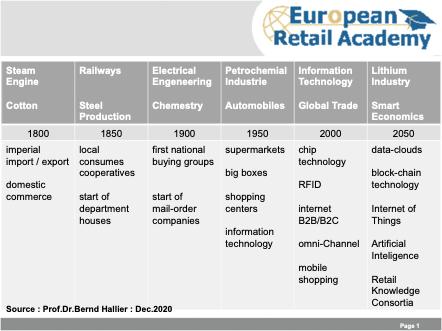
Chart 1: Long-term Innovation Cycles
Source: Hallier, B.
The impact of innovations for the entrepreneurs and the changes of consumerism within the centuries as well as a prognosis of the future within the next decades can be summarized for example by the sub-group Textile Trade. Starting in the 20ies of this century shopping in an
Holistic Marketing Management 22
affluent society is mixing with entertainment: in future also inclusive gaming in a virtual world with avatars being sponsored by the branded goods industry of textiles or by outlet-chains. The final outfit of customers might be co-determined by long-distance partners in those games or it might be a decision tool for the planning of a meeting of a group of shoppers in a specific outlet at a certain date. The real world and the virtual world mix in a Metaverse.
1.1 Origins of textile trade as family-business
Tracing family businesses in the textile sector in Europe one impressive example from the Middle Ages is the Fugger Clan from the city of Augsburg/Germany (Hallier et al. 2002, p. 12 ff). The family was named by the Latin word “fucare” standing for the technical process to create from neutral cotton the basis for colored clothes. The Fugger brothers Hans and Ulin started in 1367 and 1377 their businesses in Augsburg: importing cotton from Egypt via Venice/today Italy, transporting the cotton over the Alpes-mountain-range and coloring the stuff in cooperation with small local manufacturers. The next Fugger generation expanded the internationalization to cover also the East of Europe and the Baltic Sea. Additionally, they started to diversify into the metal business (mining gold/silver) in Austria and Hungary – finally also banking mainly for the Pope but also for Cesar Maximilian and Cesar Karl V.
In 1517 like Cesar Maximilian also Jakob II Fugger ordered a portrait painted by Albrecht Dürer (Hallier et al. 2002, p. 15) – while Ulrich II Fugger asked Hans Holbein the Older to draw him. The paintings and the outfit of the aristocrats and the traders are documents for the desire of emancipation between the upper classes – also seen in detailed regulations for dress-codes by the Augsburg Administration in 1537, 1551 and 1581.


Picture 1 and 2: Jakob II Fugger and Niclas de Respaigne
Source: Hallier, B.
Holistic Marketing Management 23
“
Dressing for Image” could be called also a portrait of the trader Niclas de Respaigne from Amsterdam who had moved his business from Venice to the textile center of the Middle East of that time Aleppo (Turkey/Syria). Peter Paul Rubens painted him in 1619 when de Respaigne was getting to marry (Hallier et al. 2002, p. 259). He was painted dressed in the Oriental (Ottoman/Turkish) Style standing on an Anatolian carpet. Cloth styles and accessoires grew in importance.
1.2 Start of Mass-Production and - Distribution
A new epoche started with the discovery of America and the import of cotton from there. In response to increased demand on the one hand side and new sources for import on the other side: the painting of Rembrandt van Reijn in 1662 is titled „Quality Control “and showes the Guilde of the Amsterdam Textile Traders checking the quality of their imports (Hallier et al. 2002, p. 255).

Picture 3: Amsterdam Guilde of Textile Importers
This trend ofmass-distributionoftextiles is also takenas a topicbythe Frenchimpressionist Edgar Degas who visited parts of his family who lived in New Orleans/USA earning their livings in the textile business (Bauer 1999b, p 129 f) His painting “Office of a cotton-trader in New Orleans” in 1873 has to be connected with his letters reporting about his stay in the USA comparing it with Paris in France: “All day we speak about cotton and credits; the ships from Europe to fetch the cotton-exports are coming in a frequency like the buses at the Paris-station!” The global supply chain and the importance of capital for increased markets became of big importance for the textile business.
Holistic Marketing Management 24
Source: Hallier, B.
Picture 4: New Orleans Cotton Exporters
1.3 Urban LifeStyle and Segmentation
That century had another impact on the textile industry also in macro-economics in general: the range of consumers was broadened beside the upper classes due to industrialization also consimers with lower budgets could be reached. Additionally, it was the start of exhibitions about the beginning of an international competition about the results of the industrialization. In 1811 for example the city of Düsseldorf/Germany prepared an exhibition for the French Cesar Napoleon I. to demonstrate the potential of the occupied Rhineland-area. It was several times repeated and was one of the origions to organize later EXPOs for the “jet-set” society of that time which travelled by the new cross-border railway-systems to explore the life-style of other countries (Hallier 2022b). In Paris Gustave Eiffel designed for the Paris Expo the famous tower which was planned to stay only for the period of the exhibition – but actually became the landmark of the city of Paris till today. Other places like Milano in Italy are also still “bundler” of all local/national producers of the textile sector to exhibit the latest fashion of Italy. In Germany after World War II Düsseldorf took over this function from the divided capital Berlin – but lost its unique sales position in West Germany after the reunification of Germany after 1990 when Berlin started to be again the number 1 trend-setter of life-style. Fashion Today reported in its News of KW 27/2022 that the Berlin exhibitions Premium, Seek and The Ground had invited also 25 international buying directors to arrange proactively meetings with the exhibitors (Fashion Today 2022). Furtheron, they announced that in 2023 the events of the Premium Group would be organized parallel to the Berlin Fashion Week. The business-competence of textile traders was for more than a century linked to

Holistic Marketing Management 25
Source: Hallier, B.
those hot-spots where designers, producers, models, high-level distributors and the high society were meeting like in circus-events watched by the public.
Important to mention that it was also Gustave Eifel who designed the fashion-show-room Au Bon Marche: a department-store with a sales-area of 25.000 squaremeters – desribed by the French writer Emile Zola in his famous “Paradise for Ladies” (Zola 2004) – which was showing the social impact also for the small businesses which started to be eliminated by the big players. Paris was competing in the ranking of consumers of the upper classes with London, Cologne, Berlin and Moscow. In 1902 Tietz in Cologne (today Kaufhof) was quoted to state that his sales-people were able to serve customers in 8 languages (Hallier et al. 2002, p. 155). Interestingly in Germany all the big department-stores started with textiles and only later diversified by an enlargement of the assortment.
Others like C&A, P&C (with their tradition to trade textiles in the triangle Belgium, Netherlands and Germany) or many local players remained in the textile sector for partly for more than two centuries: others like H&M or Zara joined in an international expansion drive but being focused on special target groups. Lately in Germany for cheap offers special textile discounters like Takko or Kik followed in down-town locations which became as outlets too small for food-stores like modern supermarkets or which are placed especially in low-income areas. Last but not least fooddiscounters like ALDI or Lidl as well as coffee-shops like Tchibo use textiles for weekly offers to get a higher frequency to their shops or to cash-in with additional assortments from those customers which can be reached by on-the-spot offers. As a result of those promotions the fooddiscounter ALDI is within the Top 10 textile retailers in Germany and the coffee-shop Tchibo has pushed the special offers to over 50 percent of its total turnover.
For labels the alternatives are high-level flagship-stores to promote the brand within an umbrellastrategy and to offer in factory outlet centers (FOC) a limited assortment which is on average 15 percent lower in its sales-prices and is additionally run by slogans like „over run“, „factory seconds“, „damaged“, „past season“, „samples“ or „discontinued items“. Very often those factory outlets arein agglomerations ofat least fivelabel-producerswith aminimum of4500squaremeters sales area (Hallier 1999c).
This evolution of the mix of target-groups enlarged also the potential tools of marketing: the storeformat,itstarget-group’sfinancialsituation,itsrangeof assortment,thepresentation-stylebecame equally important like the product itself. One example of the latest trend to catch the eye and the heart of upper- level consumers is the new store of the French top-designer Christian Dior in Paris who in 2022 upgraded his store by adding to the sales-floor also three gardens, one restaurant, one cafe and one patisserie. Another example is in Berlin P&C opening its first Mega Eco Store responding by this with a Corporate Social Responsibility strategy to the trend of many people in Germany to go shopping in stores which are constructed according to environmental aspects, presenting products which fit ecological standards and which are produced under fair conditions
Holistic Marketing Management 26
and transported with a low footprint (Kölner Stadt-Anzeiger 2022). The business became more complex – more and other abilities were needed beside the product-knowledge.
This increasing spectrum for retailers has also an impact on exhibitions: in this context it has to be remembered that it had been fairs like the EXPO in Paris which became the mirrows of the latest life-styles. After World War II there had been two competing trends: the revitalization of traditional department stores with beautiful decorated windows – and on the other hand the American Way of Life by modern sales technologies (Hallier 2022b). Both trends for better sales was the idea to launch the exhibition EuroShop and still is the basis of the success of the worldleading triannual shopfitting exhibition in Düsseldorf which was started in 1966 by the same fairmanagement which was responsible for the fashion shows of IGEDO, which was the show-room ofWestGermanyforfashion.TheflagshipofshopfittingEuroShopagainreactedin1997tofollow the latest consumer trends by segmenting its IT-shows under the name of EuroCIS and to exhibit annually for this target-group of IT-managers in retail/wholesale also to follow the speed of technical/digital innovation in this segment.
1.4 From big boxes to big data
Especially sincethemiddleofthe70iesthegrowth ofthebig playerswas supported byinnovations in the IT-Sector (Hallier 1987; Heidel 1990; EHI 1994; Hallier 1995, Hallier 1999d) Only by the electronic control of the articles in the shelf of the outlets or the delivery systems the efficiency of big groups of outlets could/can be checked. Due to the multiplication of outlets per chain the single outlets could be no longer visited permanently by the owner of the businesses or by Boardmembers but had to be delegated and to be controlled by new technology.
As an example, for the innovation of the key-elements of the retail technology is the EAN-barcode which was introduced in 1975. It contains the country of origin, the manufacturer and the product. By this the inventory within the depots and the stores could be quickly followed up. Actually, the POINT of MANAGEMENT DECISION (PMD) could be turned from the head of a manager in the headquarter of a company towards the POINT of DATA COLLECTION (PDC). Benetton for example changed the production of its cloths no longer in connection to spring/summer/autumn/winter trade fairs/collections but permanently due to the incoming data from the cash-zones of its outlets.
At about the year 2000 the printed barcode was replaced step by step by the chip technology which was able to integrate more data than the printed version and enabled interconnectivity with other systems without manual intervention. Machines started to take over from human beings: AI (Automated Intelligence) became the key-word. The UK retailer Morrisons is quoted at EuroCIS 2022 to cover already more than 90 percent of its product movements by AI of their IT provider Blue Yonder. The French department store Bonprix claimed at the same event to have survived well the decreased sales caused by the Covid Crisis due to AI software which had speeded up the data mining.
Holistic Marketing Management 27
Other advantages of the chip-technology and its connectivity with data clouds is the Internet of Things (IoT): the capacity allows to demonstrate details for the application of the bought products and to attach marketing communication. Last but not least the QR-code (Quick Response) allows the consumer to read advertising in different media and to order by a photo of the code the product immediately (Hallier 2011, p.148 ff).
The role of a wholesaler for the physical flow of products could change to be B2B – or even B2Cplatform providers in the virtual world and deliveries will come increasingly by a delivery-partner with sub-partners. The definition “institutional wholesaler/retailer” will show less members than the „functional wholesaler/retailer“. There will be a great boom in segmentation, diversification and partnering. One example of such recent cooperations is C & A Germany which started in July 2022 to place selective items at the German Site Amazon.de: the launch at the Dutch, the French, the Italian and the Spanish Sites are planned to follow.
The importance of data could be seen already after World War I when department houses were destroyed and the lack of capital did not allow new brick-and-stone outlets. In Nürnberg/Germany the Schickedanz family started a mail-order system based on the send-out of catalogues and data of customers (Hallier et al. 2002, p. 210); his company Quelle (the German word for “Source”) became a benchmark for success and was copied by others like OTTO after World War II. (Hallier et al. 2002, p. 112 f).
Modern IT/digitalization became the competitor for the printed catalogues and the brick-and-stone outlets. Parallel to EuroShop 2008 in Germany the fashion online supplier Zalando was founded. In 2022 it has 35 million customers within 17 countries in Europe. Per minute 7500 online-orders are registered. This success of course is stimulating not only newcomers but also traditional business to react with omni-channel strategies – selling instore as well as online trying to push each channel by the visibility or the comfort of the other.
But even industry is involved in the search for direct contacts with the consumer. In summer 2022 for example Beiersdorf is promoting its range of sun-creams and beauty-articles by in-store activities with trade partners in Germany. Consumers are offered a free-of-charge bathing towel if they send in a cash-slip of having bought Beiersdorf products in the value of 20.- Euro (plus) to theaddress ofthecompany. Ofcourse,also theaddress oftheshopperhas to besent forthemailing of the towel-parcel. The fabrics in this case of course are no sales-items but calculated as part of the promotion costs.
1.5 Virtual Reality, Avatars and Metaverse
The latest trend comes via Virtual Reality (VR) and will be included in a Metaverse. Within interactive games avatars will have the image of the player/players. The play-background can be the image of outlets combined with images of products.
Holistic Marketing Management 28
Within the game the player and co-players can dress alternatively the avatar and those being in the players ‘team can decide together the final outfit or meet based on those discussions in a real store of that fashion supplier. Those games could be developed and promoted by producers or retailers or in cooperation between those two groups. It might be also seen as a potential new income for those who keep the owner-rights of those income.
In the end of this thought, it might happen that the products ‘profit might be Zero – and the economic gain is the profit by advertising within the games as a kind of “listing price for the product” or selling the data of the trends as a service of market research – similarly like in the Beiersdorf case-study.
But also, C2C platforms as a kind of semi-professional business can be put into this new trend. Via eBay or other platforms consumers sell own used stuff or buy second hand for discounts of 30 to 60 percent for second hand. There are even offers of top brands of the textile or from the accessories-market for reusebyconsumers whocould not affordto pay forthoseproducts theprice of the first user. Influencers with recommendations do have their own communities as followers who want to copy their stars. Influencers earn by clicks or from advertising partners.
2.0 External Impact Factors
Also, in the past very often more than one sector of national economies have been affected by external factors like Wars, Disruptions of traditional supply chains, Exploration of New Trade Routes or Markets, Innovations like Industrialization or new Infrastructure like rail-ways.
In the context of this Chapter the major external global challenges of the 20ies of this century are listed as key-words. They are influencing the potential return on investment of the whole textile sector in general but also especially the family businesses.
2.1 Climate Change
The warming of the global climate caused in many densly populated areas of the world either draughts or extrem floods. Millions of people have lost by this own food supply and often even their homes. As a result, their budget for new textiles is at the moment very low – which is backed in theory by the Consumption Pyramid of Richard Musgrave.
The World Climate Conference in Paris had agreed to limit its global CO2-emissions to reduce the increase of the worldwide warming-up to 1.5 degrees Celsius within the next decade. The followup Conference in Egypt in November 2022 showed no consence about the split of countryindividual goals to reach the average of the 1.5 target – and also not about the tactical steps to reach such agoal. Somecountries want to stop all fossilesources forindustryorhouseholds, others
Holistic Marketing Management 29
want even to increase coal as an exception for their countries – or at least an exception for some decades – others want compensation for the problems caused by too much CO2 output from other countries. The disagreement is also not only about the volume of financial compensation but also about who has to pay the bill.
Meanwhile floods increase in Asia for example in Bangladesh, India and Pakistan – in Australia and Florida/USA – and whole island countries in the Pacific like the Maldives or Tonga are threatened to be eliminated partly or totally by the increase of the water-level. And even in Europe scenarios show that big cities along the coast of the Atlantic will be lost in a foreseeable period because thesheltersto protect thosecitiesand farmingareas is so cost-intensivethat most probably not enough financial resources will be available.
On the other hand, there a draughts which turn former prosperous farm-land into deserts like in the Southern Africa, California/USA or the south of Spain. Connected with those draughts are often extreme fires like in the last years in Australia, USA or around the Mediterranean countries Portugal, Spain, France, Italy, Greece and Turkey.
All the following three factors floods, draughts and fires spoil cultivated land or endanger cities directly – but additionally they contribute also to push the spiral of the warming up of the globe.
2.2 Migration
Due to the climate change and due to wars in quite a number of areas of the world millions of people have become migrants. Their individual budgets but also that of national and international NGOs are extremely stressed. New textiles are ranking low in comparison with food, drinks or shelters to survive.
While in Asia till the end of World War II the colonial occupation covered the area of Indochina the emancipation of the colonial military forces in the Commonwealth as well as the expansion of communism from China to Cambodia, Laos, Vietnam and Korea caused major shifts within the very diverse tribes of population. India broke down in two steps: first Pakistan was separated, then Bangladesh did split away. But even within the state of India about 48 different ethnic groups are under one roof – very often also in local/regional conflicts with each other.
Similar diversities of ethnical tribes are in Cambodia, Laos, Vietnam and partly in Korea and Thailand. These countries in this group have been/are still partly involved in the conflict of communism versus the Western style of government. Taken China as one of the major drivers in this geopolitical controversy migration of millions of people towards Taiwan and Hongkong had been within the awareness of the countries in Western Europe a rather normal development and was mainly solved within Asia.
Holistic Marketing Management 30
For Western Europe countries like Spain and France have been threats of increasing migrants coming from their former colonial activities in Northern Africa. Their “gates” have been Ceuta/Gibraltar or crossing the Mediterranean by boat to Greece or Italy. Those spotlights of migration have increased within the last years dramatically by refugees from a lot of African countries which suffer by local/regional wars or by draughts due to the warming up of climate.
Other pressure for migration towards Western Europe comes since about 2015 from the Middle East conflicts in Syria and Iraque – and lately additional from Afghanistan after Western troops left the country. It has to be mentioned that the origin of the Brexit for the UK was a conflict about the EU-migration-policy which was too liberal in the British eyes.
The latest push of migration started in spring 2022 by the invasion of the Ukraine by Russian troops. About 10 million people are either within the Ukraine migrating or towards EU countries. Due to destroyed water and energy supplies and urgent need for food and medicine within the Ukraine and Moldovia financial resources in the West are extremely stressed – and demand for new textiles/fashion is rather low.
2.3 COVID-19
The break-out of COVID in the end of 2019 was and is still connected for example in China with a close-down of whole cities, regions or even in West European countries. The result are lower incomes for employees and brick-and-stone outlets for example also textile stores. Additionally, consumers working in home-office reduce the number of suites and dresses – and working already with computers at home tend to go shopping by internet. These companies not being present by own Home Sites are losing market-shares and profits.
With theexceptionofstores forfood countries like Italy,Spain, AustriaorGermanyordered stores to lock-down their business for weeks or limited the access for even longer periods for the number of shoppers within the outlets. Customers had to wait in front of the store or had to arrange a specific date with the sales-people. Spontaneous shopping down-town or in shopping centers had not been possible. Being in an affluent society in Western Europe where shopping is mainly fun but not a necessity for the daily survival and therefore such situation of no frequency of shoppers results in dramatic decreases of sales.
For textile/fashion the situation of not selling the stocks from the shelves is different than for shops ofothernon-fooditemsasfashiondependsonthefourseasonsspring,summer,autumnandwinter. Independent of the sales-situation for example in spring already the stocks have to be ordered and paid for summer. The cash-flow has a sudden gap in such a system. The banks see such gaps and arenot always happyto increasein suchasituationthe volumeforcredits orchargehigherinterestrates for their higher risk. In the other hand the retailer has to discount his stocks to get the shelves
Holistic Marketing Management 31
empty for the products of the next season – by this he is reducing his margins which is again seen by the banks as an additional risk.
But the Covid impact did hit the outlets also already by the disruption due to lock-downs in countries of production of textiles for example in Bangladesh, Vietnam or China - and also by problems within the global total supply chain because of lock-downs of harbours like Shanghai or others. For the outlets in Germany or other countries in Western Europe it now happened that the local lock-down had ended – shoppers returned to the textile stores, but the expected new season products did not have arrived: the customer left the shop disappointed, the retailer had no sales and the bank saw an increase of risk again.
In 2022 the situation increased additionally by high energy costs due to the oil and gas disruptions by the Russian invasion of the Ukraine. Costs for energy increased already often by 100 percent and might increase even more during the winter 2023. This means economically for the textile retailers theloss ofsales volumeandthe decrease ofmargin additionally is worsened byincreasing costs for the daily operations. Last but not least the employees suffering from increasing prices for their daily life ask for higher compensation by higher salaries.
On the other hand, consumers who have learnt by home-office to use daily the internet and who saved time of travelling from their home towards company offices started to order textiles by electronic platforms. The advantage for them is saving time for going down-town , having the convenience to get the textiles delivered free to their homes and to resend them free of costs if they do not fit; and lower prices for the textiles than in the down-town shops as the depots of the textile deliveries are out of town with lower rent and lower salaries for the employed people as in Germany they do not belong to the Union of textile-employees but to the Union of transport which have lower salaries because the qualification of jobs is estimated to be lower than having skills/knowledge for consumer-consulting about the textile products.
Department-stores like Karstadt Kaufhof Galeria in Germany or H&M UK announce therefore in November 2022 to consider to close down about 30 percent of their outlets in Germany respectively the UK.
2.4 Russian Invasion of Ukraine
The Russian invasion of the Ukraine in February 2022 is causing additional problems not only for the two countries involved directly but on production, distribution and consumption patterns globally.
Due to reduced imports and exports the volume of all participants in the markets is decreasing which are losses in the end for consumption on all levels and categories. Food prices are in the end of 2022 up by 70 percent because the Ukraine and Russia had been the main grain exporters to
Holistic Marketing Management 32
Western Europe and Africa. Now in summer and autumn 2022 the war resulted of the destruction of the infra-structure in the Ukraine to export its grain – and on the other end the Western Alliance did cut the imports from Russia to cut Russia’s buying power for weapons.
The shortage of grain but also oil from sun-flowers is decreasing the global supply for those products which in Western Europe leads to higher consumer prices for food and in poor countries in Asia and Africa to food shortage. Hunger again in Africa leads to more migration to those countries in Western Europe which still have food on their shelves.
Beside the shortage of food due to less corn from Russia and the Ukraine there are tremendous price increases for energy as Russia was a main supplier of gas and oil for Western Europe. Again, this has impacts for consumers’ budgets but also the cost-structure for production and distribution In Germany in December the department store-chain Karstadt Kaufhof Galeria is considering to close at least 30 percent of its 139 outlets – as does also announced by H&M UK for its operations there. Alone at those two big companies several thousand employees will be out of job – having reduced incomes. But also, for textile producers such close downs means that there are thousands of shelves not to be stocked in 2023/2024.
The competition of producers for the remaining retailers in the market will grow as will be the competition of retailers with omni-channel tactics to attract consumers which eagerly due to decreasing income will search for best value for their money.
Each dollarspent by governments forweapons in thatwaror forrestoring destroyedinfra-structure is no longer available as input for human consumption. This has short-term effects for today’s consumerism but also for the next generations.
2.5 Accumulation of Problems
All listed external problems each by each are already heavy burdens on business in the near future. Whatitmakesdifferenttoearlierdaysisitsaccumulationandcomplexityofaworldwhichbecame globally so interconnected in the last 25 years like never before. There are no strategies developed which had forecasted this situation.
Taken Western Europe after World War II it was already a great political deal between the former enemies of the war to create the roots of today’s EU in the first step by 6 countries and then in further steps to enlarge it – after the fall of the Berlin Wall and the fall of the former Sowjet Union even by countries of the former COMECON.
The start of Economic Zones in China by the former Chairman Deng and later the Vision of a Revival of the Traditional Silk Road to interconnect Europe and Asia kicked of the dream of a Global House of Harmony based on an optimization of the triangle between Economics, Ecology and Ethics.
Holistic Marketing Management 33
This dream of a joined civil society with respect to each other has been broken abruptly by geopolitical power-plays about the Aims to Limit the rise of the World Climate, the growing numberofimmigrants dueto climatechangeandwarsandlast but notleast theCovid-19pandemic which is widening the gap between rich and poor people within the single countries but also between rich and poor countries globally.
2.6 Lack of Theory
The theoretical models used within the last century were based on the optimization of workprocesses (Adam Smith) or the national/international exchange of products (David Ricardo / Michael Porter).Therehadbeennoconsiderations about thepossibilities that aglobaloptimization could bedisruptedforgeopolitical interests.But nowtheglobalfreedom oftradewith international work-division has crashed. Models for Resilience have yet to be developed.
In the 70ies of the last century there was started a discussion about “The Limits of Growth” – now in the end 2022 we have to revitalize that topic. We realize that already within 6 months per year we are using 100 percent of the really available resources of our globe for each year.
Consumption has to be reduced – food waste has to be reduced – packaging and transportation has to be reduced. Sending textiles free of charge and with no charge for returns – and destroying returned textiles because it is cheaper than to clean them and to store them again is no longer acceptable if a theory and application of such a theory is charging the real price for the production/distribution and also the redistribution/and used resources for both ways.
3.0 Conclusion about the present situation and the future
Especially for family-businesses the present situation caused by the speed of sector-internal innovations as well as by external macro-effects is a unique challenge.
3.1 Speed and Complexity
Compared with the development of innovation cycles in the last 200 years the speed of the evolutionary permanent wheel of retail has turned in the last 25 years into a revolutionary retailtornado. (Izraeli, D. - 1973); Hallier, B. - 2011)
3.2 Overall Lack of Theory
Holistic Marketing Management 34
Having an overall lack of theory means also to have a lack of measures for resilience for individual sectors and of course for small and medium-sized businesses – many of them family owned.
3.3 Pioneer of Niche-Markets
The traditional family textile trader as a specialist making decisions alone by creating ideas just in his head will no longer be able to innovate and execute all alternative processing in massdistribution. But if he is speedy enough to adapt quickly in a permanent changing market he will remain a potential pioneer in niche-markets.
Big business needs a broad knowledge of different abilities in management - no longer to be in the hands of single persons (or only in exceptional cases) or run by people with experience in one sector only. Also, family-businesses will have to integrate know-how from external Human Resources which in the end is changing the character of a “family-business”.
One of the profiles beside the long-term human commitment of family-members perhaps over generations is also to back the processes of operations by own capital/risk. Smaller markets or disruptions of markets do not allow to accumulate big sizes of own capital. Disruptions unfortunately decrease capital for the running operations as well as for innovation.
3.4 Joint Capital or Share of Outlets
The internal and the external disruptions cause a big need for fresh financial capital. Family business havetherefore to checkcooperations like byfranchiseofwholestores or shop-in-theshop depots – sometimes perhaps even for a broader visibility the chance to display products in pop-up shops in a cross-sector environment. Such cross-selling could be either from textile stores to interested groups like in Stuttgart/Germany Breuninger Textiles with exhibitions of Porsche sportscars as both come from the same area or Soccer Fan Clubs with offers of T-shirts or other textile items for the fans of those specific clubs.
Cooperations could be also on the technical level like a joint IT-platform for more visibility for fashion of a region or a country. Possible are in such a category mono-sector platforms like “Wear of India” or “New Fashion of Pan-Africa” which both had been cases in discussions with staff of the European Retail Academy.
But also, platforms like “Irland” or “Buy Scottish” could bring visibility for cross-sector target groups which perhaps have a fable for everything from Irland or Scotland: Irish butter, Irish whiskey, Irish cakes…
Holistic Marketing Management 35
3.5 Retail Knowledge Consortia
Looking beyond the sector of textile-business one can see that companies like AMAZON or ALIBABA but also data-collectors like Google / Microsoft or DHL delivery start to act as partners within Retail Knowledge Consortia (Hallier 2022c) The future success will depend on the way leaders of companies will be able to bridge different company cultures for united ambitions – or they have to limit their activities to the function of Holdings for Shares.
Intheretail-theoryin Germanytherehadbeenin the60ies/70ies ofthelast centurythemainstream to focus retail by dividing between institutional approaches like neighborhood-store, discounter, supermarket, hypermarket and other outlet-definitions according to the store-size or the number of articles being offered or by the functional approach of being a retailer only selling to the level of individual consumers or being a wholesaler only to deliver to other retailers or to HORECA sector of hotels, restaurants, pubs. That time in Germany was reflecting in research and teaching by the analysis of segmentation and diversification as means of profiling companies by stores as a physical point of differentiation. Store branding was a key-element of retail marketing at that time. It has to be reminded that the exhibition “EuroShop” started in 1966 in Düsseldorf.
Now with the start of the 20ies of the present century the new stress of analysis is put to the functional processes and elements of marketing: a supermarket concept is no longer limited to 800 square meters sales area and an assortment of 10.000 items – but if it is the assortment-mix and the appearance by POS-tools like a supermarket it can have also for example 2500 square meters and 25.000 items plus service counters.
Insofar the range of “retailers” as well as the physical outlets have changed in size, assortment and targeting; traditional definitions are becoming just history- they are no longer relevant for modern applied sciences.
Knowledge and Skills are the future elements in functional retail; sharing cross-sector knowledge is decreasing costs for alternative own development of innovative tools or data-panels and within the Darwinism of retail it is quicker to conquer new markets.
3.6 Shift and Split of Profits
And finally, it has to be realized that the traditional split of profit along the Total Supply Chain will switch from production and trade towards companies with data-competences /digital marketing experiences – even like game-developers. This could mean that for example no longer a range of textiles is produced targeting own consumer-groups but delivering textiles ordered by other companies some of the own sector or others from cross-sectors.
Holistic Marketing Management 36
The main point is to check permanently the total supply chain for cheaper processes than own operations or to share the discovery of new markets for better profits with partners to speed up relevant market shares which could be not caught by own force.
3.7 Urban Future
On local, regional and national level within City Marketing Concepts department- or textile stores are anchors for urban lifestyle. The closure of such players can cause problems for a whole cluster of other stores or restaurants/pubs being linked/dependant on the high frequency at the anchor business. A collapse of the key-player can endanger the wealth of such areas. The domino effect are less customers for the suppliers, less jobs for employees – but also less income for the houseowners or shopping center-owners.
City Marketingfordown-townactivitiesstartedby URBANICOM as acooperationbetweenurban institutionsandcommerceas acountermeasureagainst shoppingcenters outsideofthecitieswhen mobility of consumers started by the explosion of the number of private cars in the 60ies in West Europe.
Interestingly in November 2022 at BBC TV world-program two advertisements could be watched: one about the city of Istanbul as a target for shopping in a mix of traditional Souks and shops down-town; at another advertisement spot from Dubai showed one of the world’s biggest modern shopping-centers.
The learning from those examples from Western Europe and the Middle East is that the understanding about what can be expected about concepts of future cities does differ extremely from country to country. Textile fashion is not automatically like 100 years ago Urban LifeStyle promoted in London or Paris – but the main future stream of fashion might be created and influenced byfashion designers from Africaor Indiawhoare potentially able to communicatetheir concepts via new media in times of reliance from the present problems.
3.8 Rich and Poor Countries
In macro-economic terms it will create big problems for developing countries if they do not have the skills or digital connections to participate with a fair share in the value-chain but if they remain just in the competition of offering the cheapest labour internationally (Hallier 2022 d; Hallier 2022 e).
The task for international political and other leaders of the Global Community would be to keep the markets in the rich countries open for exports from the poorer countries and to support the
Holistic Marketing Management 37
developing countries with the technical infra-structure for digital communication and sales – and last but not least by guarantees for capital for necessary innovations
References
1. Kontratieff, N., Die langen Wellen der Konjunktur, in.: Archiv für Sozialwissenschaft und Sozialpolitik, Volume 56, p.573 – 609, 1926
2. Schumpeter, J., Konjunkturzyklen. Eine theoretische, historische Analyse des kapitalistischen Prozesses.Göttingen, 1961
3. Hallier, B. 1999 a: in Bauer, H.-J. and Hallier, B., Kultur und Geschichte des Handels, pp 260-263, Cologne, 1999, and Hallier, B., 2022 a, 50 Years Perspective, in: www.europeanretail-academy.org, News 30.05.2022
4. Bauer, H.-J. and Hallier, B., 1999 b: Kultur und Geschichte des Handels, Cologne, 1999
5. Hahn, H.-W., Geschichte des Deutschen Zollvereins, Göttingen, 1984
6. Hauptmann, G., Die Weber, Berlin,1892
7. Birchall, J., The International Co-operative Movement, Manchester, 1997
8. Bauer, H.-J. and …, a.a.O., pp..162 -174
9. Zola, E., Paradies der Damen, Frankfurt, 2004
10. Hallier, B., Sammler, Stifter und Mäzene, p.155, Cologne 2002
11. Hallier, B., Sammler …, a.a.O., pp. 210 – 212
12. Bauer.H-J. …, a.a.O., pp. 185-186
13. Bauer, H.-J. …, a.a.O., pp.176- 180
14. Bauer, H.-J. …, a.a.O., pp.189 -192
15. Hallier, B., Sammler …, a.a.O., p. 12 ff
16. Hallier, B., Sammler …, a.a.O., p. 15
17. Hallier, B., Sammler …, a.a.O., p. 259
18. Hallier, B., Sammler …, a.a.O., p. 255
19. Bauer, H.-J., … a.a.O., p. 129 f
20. Hallier, B. 2022 b, Promoting Life-Style, in: www.european-retail-academy.org, News 20.08.2022
21. Fashion Today, KW 27/2022
Holistic Marketing Management 38
22. Zola, E., Paradies …, a.a.O.
23. Hallier, B. , Sammler …, a.a.O., p.155
24. Hallier, B., 1999c. in: EHI, Factory-Outlet-Center, Cologne, 1999c
25. See also: Mode ohne schlechtes Gewissen, in: Magazin, Kölner Stadt-Anzeiger, 12.08.2022
26. Hallier, B., Promoting …, a.a.O.
27. Hallier, B., Sich ins Regal hineinrechnen, in: absatzwirtschaft 10/1987; Heidel, B., Scannerdaten im Einzelhandelsmarketing, Wiesbaden, 1990; EHI, Scannersysteme – Neue Impulse für Organisation undMarketing,Cologne, 1994; Hallier,B., Der Handel auf dem Weg zur Marketingführerschaft, in: absatzwirtschaft 3/1995; Hallier, B., Wird
ECR zum Club der Großen? in: von der Heydt, A., Handbuch Efficient Consumer Response, Munich, 1999d
28. Hallier, B., Smartphones and QR-Codes, in: Hallier, B., Von der Krise zur Kompetenz/From Crisis to Competence, Bonn 2011, p. 148 ff
29. Hallier, B., Sammler…, a.a.O., p. 210 ff
30. Hallier, B., Sammler …, a.a.O., p. 112f
31. Hallier, B., 2022c. Empowered Logistics, in: www.european-retail-academy.org, News 30.01.2022
32. Hallier, B.,2022d. Darwinism in theTextileSector,in: www.european-retail-academy.org, News from 30.06.2022;
33. Hallier, B., 2022e. Accelleration by Disruption, in: www.european-retail-academy.org, News 31.08.2022
34. Izraeli, D., McNair: Thethreewheels ofretailing, in: EuropeanJournal ofMarketing; 1973, Vol. 7 No.1, pp 70-74; Hallier, B., Retail Tornado, in: Pantano, E. et Timmermans, H., Advanced Technology Management for Retailing: Frame works and Cases; pp 408, 2011, IGI Global Address: Prof. Prof. E. h. (RUS) Dr. Bernd Hallier, President of the European Retail Academy, Veilchenweg 8, 51503 Rosrath, Germany, e-mail: b.hallier@gmx.net
Holistic Marketing Management 39
E-Commerce
Development and Entering the Path to NeXT Commerce
Drd. Ioan Matei PURCĂREA

Abstract
We are witnessing the e-commerce development, the evolution of digital commerce and ecommerce platform, as well of the linkage between e-commerce and logistics experience. There is no doubt about the need of a frictionless commerce. It is useful to learn from the holiday commerce predictions, and to better understand the challenges in grocery e-commerce weakened by inflation. And now it is the real time to enter the path to NeXT Commerce
Keywords: E-commerce, Digital Commerce, E-Commerce Platform, Frictionless Commerce, NeXT Commerce
JEL Classification: D83; L81; L86; M15; M31; O32; O33
E-commerce, Digital Commerce and the Modern E-Commerce Platform
In 2008 Oxford Reference defined e-commerce (electronic commerce) as “The use of the Internet to buy and sell goods and services”, while according to Sellercentral Amazon com (2022), where Amazon sales activity is monitored by logged in sellers, e-commerce is seen as “the trading of goods and services on the internet… bustling city center or brick-and-mortar shop
Holistic Marketing Management 40
translated into zeroes and ones on the internet superhighway.” On the other hand, according to Gartner (2022), customers are enabled by digital commerce “to purchase goods and services through an interactive and self-service experience,” the digital commerce including “the people, processes and technologies to execute the offering of development content, analytics, promotion, pricing, customer acquisition and retention, and customer experience at all touchpoints throughout the customer buying journey.” And as shown by Mudsa (2022), every aspect of the retail experience is touched by digital commerce as a holistic ecosystem.
In order to discover goods or services and compare their quality or prices offered by different online sellers, consumers can use an e-commerce platform (both parties will meet together on that end-to-end software application to play their roles), the online sellers taking into account various aspects, such as: which are the most popular e-commerce platforms (like Shopify, BigCommerce, Magento, WooCommerce etc.); advantages and disadvantages (see the first figure below) of selling on e-commerce websites or online marketplaces (shopping from various sources being facilitated by e-commerce sites or apps, marketplaces’ operators just showing products and enabling transactions, but not owning any inventory); main parts of an ecommerce platform are e-commerce website builders, accounting and inventory management systems, and customer service infrastructure; main key differences between marketplace and platform, as shown in the next figure below (Litcommerce, 2022).

Figure no. 1: Pros & cons regarding selling on online marketplace and e-commerce platforms


Source: Adaptation from Litcommerce, 2022. Marketplace vs eCommerce Platform [2022] – Which One is Better? Oct 2022 (Work cited)
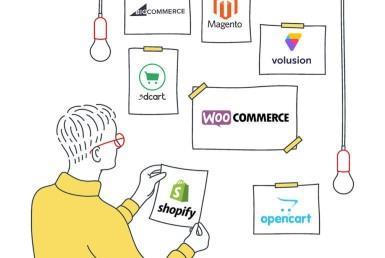
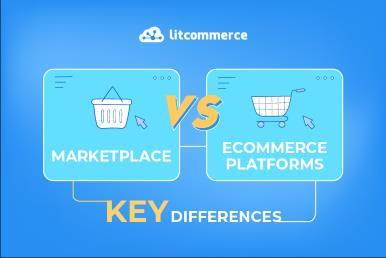
Holistic Marketing Management 41
Figure no. 2: Main key differences between platform and marketplace

Source: Adaptation from Litcommerce, 2022. Marketplace vs eCommerce Platform [2022] – Which One is Better? Oct 2022 (Work cited)
From the point of view of a successful e-commerce website (representing the main connection to digital audiences), it is worth mentioning its essential components, as follows: easy navigation, mobile optimization, checkout, customer support, shipping and return information, calls to action (McOmie, 2022).
On the other hand, in order to find the perfect solution for both individuals, and small businesses, an e-commerce and marketing expert evaluated recently the best e-commerce platforms of 2023, as shown in figure below (Nichol Smith, 2022), and recommended to take into consideration some vital features (such as: easy to use; inclusion of mobile-responsive sites; offering integrations for functionality it may not have formed an integral part of the structure, and scale as that business grows.
Holistic Marketing Management 42
Source: Adaptation from Nichol Smith, A., 2022. The Best E
Updated November 17, 2022
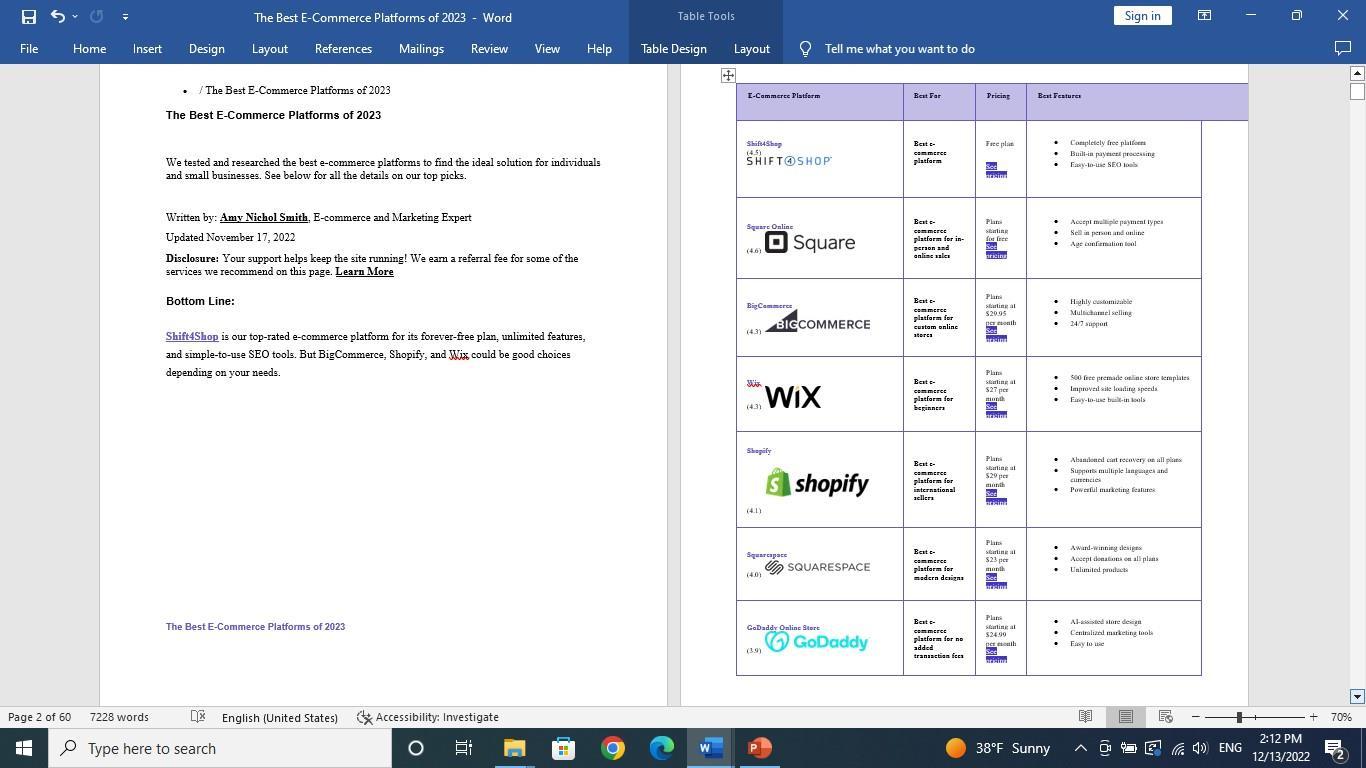
According to the modern e-commerce platform Shoplazza (2022), e commerce future will be governed by new rules, priorities, demands, expectations, and norms, and that within the context in which digital commerce has been fast helped to advance. As the accelerated online business competition made an increased number of companies to rise their digital presence across social or sales platforms with the help of the omnichannel sales strategy, Shoplazza appeared as an improved solution (by integrating Google Performance Max) to better understand better online shoppers’ behavioral patterns (being essential to acquire consumers’ behavioral data) from the various above-mentioned platforms while respecting consumers’ privacy rules.
Thanks to deep integration not only with Google, but also with Facebook Meta, and TikTok, Shoplazza ensures omnichannel of sales across all these platforms (see also the below figure), by deep integration with Google, Facebook Meta, and TikTok. On the other hand, with regard to the necessary enterprise solutions, it is useful to know that the headless commerce service model of Shoplazza is offering highly customizable services.
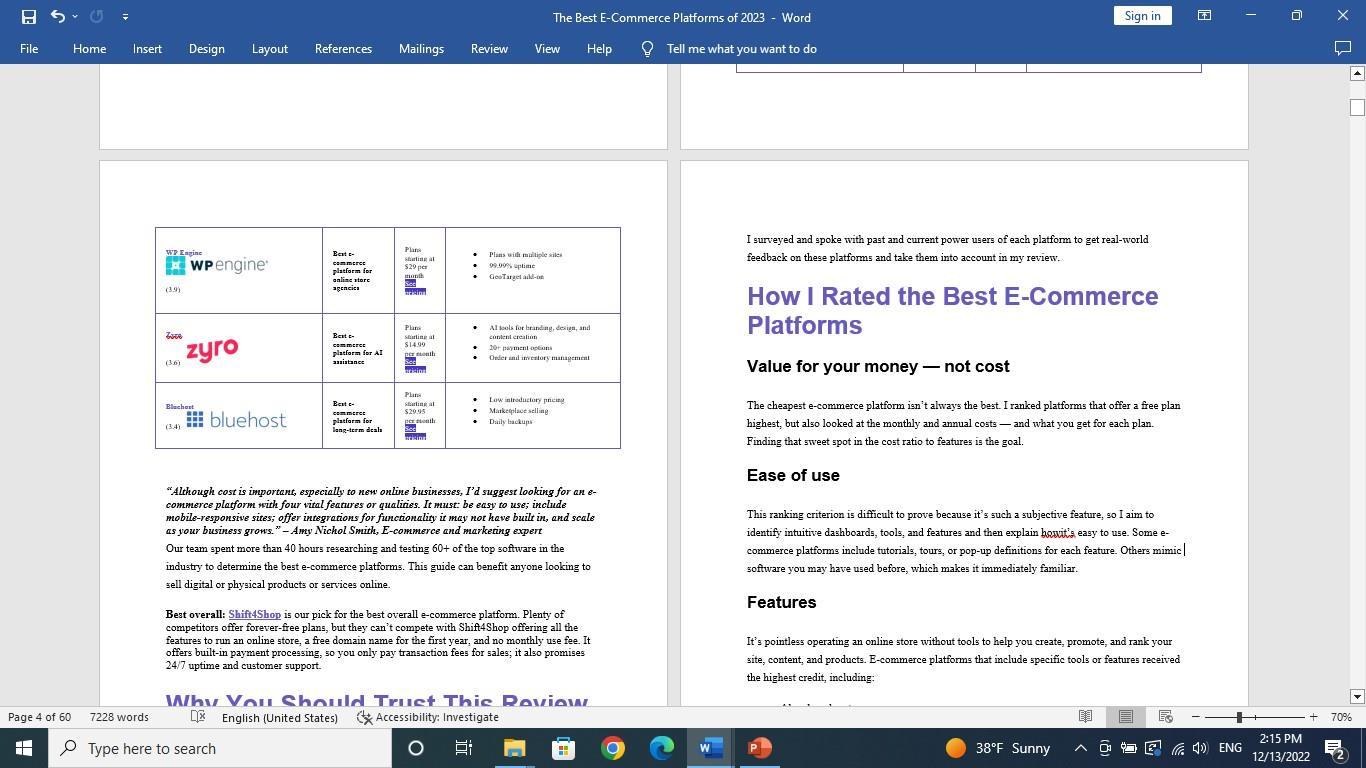
Holistic Marketing Management 43
Figure no. 4: Shoplazza. Omni-channel for sales

Source: Shoplazza, 2022. Transit V.001, Enterprise Newsletter September 2022, Toronto Vol.001 Proudly Powered by Story from Yorly’s Beauty, Enterprise service Features, Future of Commerce #1, p. 3. (Work cited)
As can be seen from the figure 1, the online marketplaces (from sites) eBay and Etsy, are placed between Amazon and Walmart (the competition between these last two giants is wellknown). Wolf (2022) showed recently how both e-commerce players’ decline (Etsy and eBay being also placed between Amazon and Walmart, see the figure below regarding retail media ad spending growth, by company – ecommerce channels, US, 2022, % change) from the high levels during pandemic was attenuated by embracing their niche categories to attract an engaged user base (knowing the importance of focusing on retained customers)
Figure no. 5: Retail Media Ad Spending Growth, by Company. US, 2022, % change
Source: Wolff, R., 2022. Etsy and eBay escape the worst of the ecommerce downturn, but Wayfair and Peloton aren’t so lucky, Insider Intelligence, Nov 4, 2022 (Work cited)
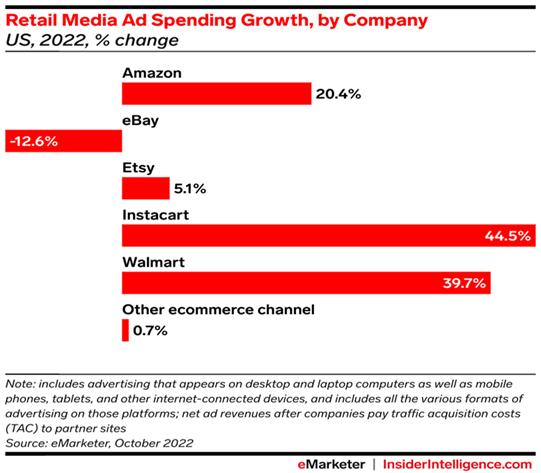
Holistic Marketing Management 44
On the other hand, as can be seen from the figure 3, Shopify was recently evaluated as one of best e-commerce platforms of 2023. Also recently, CB Insights (a, 2022) analyzed Shopify’s growth strategy (Shopify being considered an e-commerce infrastructure leader continuing to invest in solutions necessary for its 1.8M merchants’ growth), and identified ecommerce infrastructure as one this company’s strategic priorities (together with marketing and personalization tools, new sales channels, and shipping and fulfillment enablement), as shown in the figure below.
Figure no. 6: Shopify’s Strategy Map
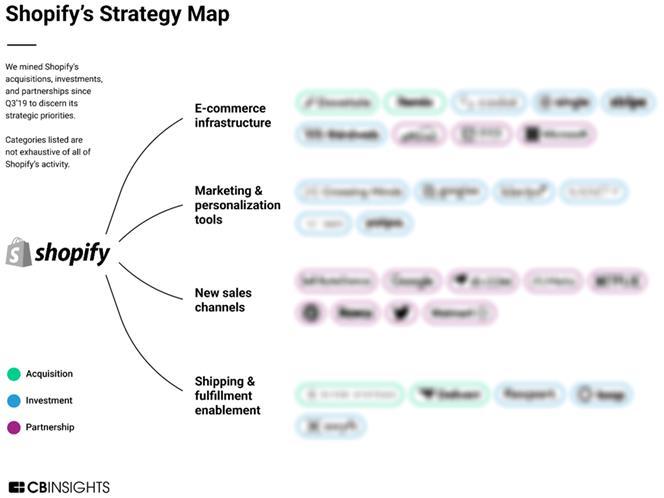
Source: CB Insights a, 2022. Analyzing Shopify’s growth strategy: How the e-commerce platform is expanding its merchants’ reach and speeding up delivery, Research, November 10, 2022 (Work cited)
E-Commerce and Logistics Experience
As underlined above, Shopify is considered an e-commerce infrastructure leader. Within this framework, it is also worth remembering that in order to expand fast and easy fulfillment Shopify created an E2E logistics platform by buying (what represents its biggest acquisition up until the present time) in May 2022 the e-commerce fulfillment company Deliverr (Cabrey, 2022). By this acquisition made by (the provider of essential internet infrastructure for commerce) Shopify Inc. (NYSE, TSX: SHOP), added to its Shopify Fulfillment Network (SFN)
Holistic Marketing Management 45
the so-called “Deliverr’s world-class software, talent, data, and scale”, so as to offer merchants significant benefits for their logistics needs (multichannel inventory management; greater alignment between inventory supply and demand; more flexible, independent logistics services; shop promise – this service offering U.S. consumers trusted both two-day, and next-day delivery options) based on a trusted one-stop shop (Shopify, 2022).
Coming back to the above-mentioned online marketplace (from site) eBay, allow us to made reference to the recent analysis of eBay’s growth strategy made by CB Insights (b, 2022), that revealed shipment & fulfillment enablement as being one of eBay’s strategic priorities (together with: authentication services, category specialist marketplaces, and payment & financing).
Figure no. 7: eBay’s Strategy Map
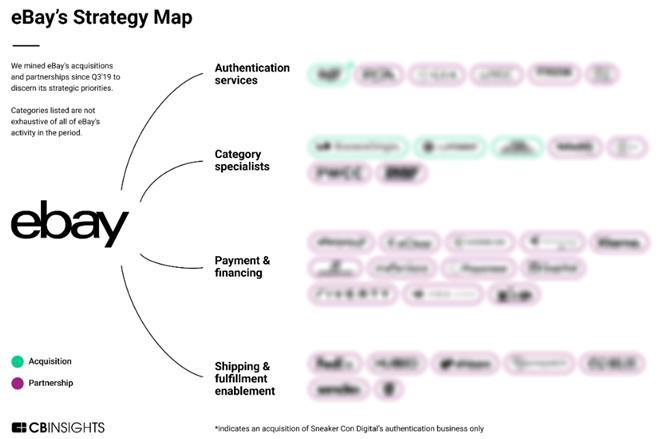
Source: CB Insights b, 2022. Analyzing eBay’s growth strategy: How the company is prioritizing category specialization & luxury authentication, Research, December 6, 2022 (Work cited)
A recently released whitepaper by Reuters Events in cooperation with DHL (2022) confirmed the crucial importance of customers’ logistics experience in relation to the successful obtainment of customers’ conversion, satisfaction and retention, the final touch point for customers within the context of the e-commerce acceleration being logistics (which has been seen traditionally as a cost-center in a business). Within this framework were highlighted significant aspects, such as: CX improvement depends on a strong logistics process (entirely, from customer purchase to the return that is a real challenge); the obtainment of positive impacts
Holistic Marketing Management 46
not only on customer service and profitability, but also on sustainability involves greater delivery flexibility; continuous improvement of both the delivery experience, and capacity utilization presupposes to increase collaborative partnerships during many years; in empowering consumers, optimizing warehouse space, and reducing emissions a key role will be played by technology; there is no doubt that to both improve CX, and to encourage customers to buy a higher-end version of an originally intended to purchase product returns (if executed correctly) returns can be seen as a true opportunity (before making any strategic shifts must be understood the returns data); for better demand planning (with real-time data), sustainability, and customer service it is essential to have a great collaboration.
Frictionless commerce, holiday commerce predictions, and challenges in grocery e-commerce weakened by inflation
As a leader in frictionless commerce (understood as a full transformation of the entire commerce ecosystem, every transaction being digitally assisted – see the first figure below), Pivotree (2022) pledged for supporting a frictionless experience for holiday shoppers (see the next figure below), by: focusing on a marketplace strategy, offering various fulfillment options (mainly BOPIS), and providing a consistent CX for all those moving (easily) between channels (in-store, online, and mobile shopping).
Figure no. 8: Pivotree Frictionless Commerce
Source: Pivotree a, 2022. Commerce. Frictionless (Work cited)

Holistic Marketing Management 47
Figure no. 9: 2022 Holiday Commerce Predictions and Challenges in 2022

Source: Pivotree b, 2022. The Ultimate 2022 Holiday Prep Guide [pdf] eGuide, July 25, 2022, p. 2 (Work cited)
Let’s recall the words of McKenzie (2018) while approaching the topic of frictionless shopping 2.0 (to win in this landscape involving investments not only in technology and datadriven insights, but also in big-picture thinking): “When the concept was first embraced by retailers, “frictionless” meant ease and less hassle quite literally, a “lack of friction.” But as innovations such as mobile wallets, digital receipts, free and fast shipping, and one-click purchasing emerged and began to reshape the consumer shopping experience, the definition began to be reshaped as well. Today, a frictionless experience means more than just less hassle. It means greater speed, personalization, and wow experiences. And it means anticipating not just meeting consumers ’ needs.” Allow us to also remember within this framework some of the ideas expressed on the social publishing platform Medium (2016) regarding the frictionless commerce that: “blends the full spectrum of monetization environments, including in-store, inapp, in- game, smartphones, smart TVs, and wearables. In addition, the expanding world of the Internet of Things (IoT) means that the devices themselves can communicate machine-tomachine (M2M), which opens up a further stream of commerce, with cars and trucks ordering their own replacement parts or booking their service appointments ”
Holistic Marketing Management 48
As shown by Pershke (2021), nearly all of us interact currently with smart retail using smart technologies, the deployment of computing and storage resources where we are located in our customer journey knowing significant developments. Within the context of e-commerce development, the functionality of an e-commerce solution is determined by the technology stack (SCAND a, 2022). There is an obvious pressure on today’s grocery retailers to adopt personalization strategies considering the key brand differentiators (product, price, and especially experience taken as a whole), valorizing e-commerce’s technology stack (Den Boer, 2022). Confronted with various difficulties (such as: online success threatened by low margins, consumers’ habits and continuing obstacles keeping them from online shopping, and missed opportunities because of insufficient data), grocery e-commerce needs (in the opinion of Den Boer) to find the necessary solutions (such as: using personalization and improving CX to increase profitability, increasing loyalty by giving more control to their customers, and implementing the right personalization by correctly collecting and interpreting data – data activation depending on the right technology stack) And this should be also seen broadly as part of the continuous developments including the Internet of Things (IoT) the Internet of Behavior (IoB), and going beyond obtaining customer data and moving to detailed analysis of customer behavior so as to create individually tailored services (SCAND b, 2022)
Reflecting on the prospects for grocery e-commerce in the US, Coresight Research CEO and Founder (Weinswig, 2022) highlighted inflationary pressures affecting the grocery ecommerce market (both price-sensitive shoppers looking now actively for promotions and discounts, and retailers seeking to drive online sales by offering exclusive online deals based on effective loyalty programs) in the short term. In her opinion, a key advantage for e-commerce players versus stores is represented by the currently used (by retailers, including Amazon) onestop pages for deals.
Instead of conclusions: The imperative of entering the path to NeXT Commerce
It is worth showing that on November 28, 2022 Capgemini (the worldwide known Group) announced the valuable collaboration with one of Romania’s largest retail chain providers, Carrefour (seen as having a clear digital strategy) The improvement of CX both instore, and online is the final objective of the project allowing Carrefour to deploy the solution advanced by Capgemini (based on a 3-year contract), by designing, operating, securing, and monetizing APIs (handled by a simple-to-use API management platform, to benefit both its supplier ecosystem, and CX), as well as further developing, maintaining and supporting these APIs.
In our opinion, this can be considered an interesting move in the context of McKinsey’s E-commerce Global Initiative, NeXT Commerce (Arora et al., 2020): “A successful transition to
Holistic Marketing Management 49
the next horizon of digital commerce requires companies to get real about being customer first and make some hard choices. ” McKinsey’s representatives underlined the imperative of ensuring the proper level of online and offline engagement by putting at the organization’s center the digitally driven commerce and meeting customers’ ever-rising expectations by orchestrating experiences, this being called the next horizon of value NeXT commerce. Within this context, while pledging for focusing on the three Cs (customer, customer, customer), it was given an illustrative B2C example with regard to NeXT commerce versus e-commerce experience for a running enthusiast, as shown in figure below:
Figure no. 10: NeXT commerce versus e-commerce experience for a running enthusiast
Source: Arora, A., Longo, R., Plotkin, C.L., Sivaeva, T. and Wang, K.W., 2022. Becoming indispensable: Moving past e-commerce to NeXT commerce. [pdf] McKinsey’s E-commerce Global Initiative, NeXT Commerce, November 2022, p. 5 (Work cited)
Within this framework, McKinsey’s representatives highlighted this real need of putting the customer first, profitability being placed in NeXT commerce as a core capability based on knowledge of what companies’ customers value and where companies are distinctive, one hand and the operational efficiency (being well-known that among e-commerce’s highest costs is the above-mentioned logistics which is erode margins rapidly), on the other hand. And among other

Holistic Marketing Management 50
aspects it was revealed the need of having clear incentives oriented to customer for each function in a company’s business.
According to Walters (2022): “Customer first means the organization puts the customer at the center of organizational decision-making instead of organizing around products… means seeking ways to consistently and proactively deliver a positive customer experience by designing and delivering with the customer in mind. A customer-first mindset is closely related to purposedriven thinking.” As shown by the leading marketplace for legal services UpCounsel (2022): “Final consumer definition is the description of the characteristics of an end user of a finished product or service… An end user or final consumer is the final point in a distribution chain… In terms of marketing, customers and final consumers alike make up a “decision-making unit” (DMU). A DMU can comprise from a few people to thousands of people. ”
And putting the customer first… allow us to end by making reference to the words of:
- Professor Ryan Calo (2014): “In 1999, Jon Hanson and Douglas Kysar coined the term “market manipulation” to describe how companies exploit the cognitive limitations of consumers... Today’s companies fastidiously study consumers and, increasingly, personalize every aspect of the consumer experience. Furthermore, rather than waiting for the consumer to approach the marketplace, companies can reach consumers anytime and anywhere. The result of these and related trends is that firms can not only take advantage of a general understanding of cognitive limitations, but can uncover, and even trigger, consumer frailty at an individual level… The truth is that society is only beginning to understand how vast asymmetries of information coupled with the unilateral power to design the legal and visual terms of the transaction could alter the consumer landscape. Three phenomena, all intimately related to data, threaten to dramatically accelerate data-informed marketing, and hence the potential for market manipulation. The first phenomenon is the “mass production of bias” through big data; the second, the possibility of far greater consumer intelligence through “disclosure ratcheting”; and the third, the move from ends-based to means-based ad targeting and interface design. Together, these phenomena begin to leverage the full potential of consumer mediation in ways that consumers and regulators can scarcely ignore…”;
- David Mitby (2020), Google’s Director, Product Management, App Ads: “We believe there are three key ways to put consumers at the core of your strategy: help people quickly get what they want, deliver relevant information and make it easy for your customers to take action.”
References
Arora, A., Longo, R., Plotkin, C.L., Sivaeva, T. and Wang, K.W., 2022. Becoming indispensable: Moving past ecommerce to NeXT commerce. [pdf] McKinsey’s E-commerce Global Initiative, NeXT Commerce, November
Holistic Marketing Management 51
2022, pp. 1-2, 5-7, 10., Available at <becoming-indispensable-moving-past-e-commerce-to-next-commerce> [Accessed 18 November 2022].
Cabrey, E., 2022. These were the most notable retail m&a deals of 2022, Retail Brew, December 14, 2022. [online] Available at: <https://www.retailbrew.com/stories/2022/12/14/these-were-the-most-notable-retail-m-and-a-deals-of2022?> [Accessed 15 December 2022].
Calo, R., 2014. Digital Market Manipulation, The George Washington Law Review, Vol. 82, No. 4, August 2014, pp. 995, 1006-1007. https://digitalcommons.law.uw.edu/faculty-articles/25.
Capgemini, 2022. Romania’s Leading Retailer, Carrefour, collaborates with Capgemini to become a “DigitaL Retail Company”, Press Release, Bucharest, November 28, 2022. [online] Available at: <https://www.capgemini.com/news/press-releases/romanias-leading-retailer-carrefour-collaborates-with-capgeminito-become-a-digital-retail-company/> [Accessed 2 December 2022].
CB Insights a, 2022. Analyzing Shopify’s growth strategy: How the e-commerce platform is expanding its merchants’ reach and speeding up delivery, Research, November 10, 2022. [online] Available at: <https://www.cbinsights.com/research/shopify-strategy-map-investments-partnerships-acquisitions/?> [Accessed 20 November 2022].
CB Insights b, 2022. Analyzing eBay’s growth strategy: How the company is prioritizing category specialization & luxury authentication, Research, December 6, 2022. [online] Available at: <https://www.cbinsights.com/research/ebay-strategy-map-acquisitions-partnerships/?> [Accessed 15 December 2022].
Den Boer, S., 2022. How Grocery Businesses Can Grow Revenue Through E-Commerce Personalization, Bloomreach, Aug 01, 2022. [online] Available at: <https://www.bloomreach.com/en/blog/2022/how-grocerybusinesses-can-grow-revenue-through-e-commerce-personalization?> [Accessed 31 October 2022].
Gartner, 2022. Definition of Digital Commerce, Gartner Glossary. [online] Available at: <https://www.gartner.com/en/information-technology/glossary/digital-commerce> [Accessed 12 December 2022].
Law, J. and Smulle, J. (Editors), 2022. A Dictionary of Finance and Banking (4 ed.), Oxford University Press.
Litcommerce, 2022. Marketplace vs eCommerce Platform [2022] – Which One is Better? Oct 2022. [online] Available at: <https://litcommerce.com/blog/ecommerce-vs-online-marketplace/> [Accessed 4 November 2022].
McKenzie, S., 2018. Frictionless shopping 2.0: How its definition has evolved and what it means for brands, Retail Customer Experience, Dec. 27, 2018. [online] Available at: <https://www.retailcustomerexperience.com/blogs/frictionless-shopping-20-how-its-definition-has-evolved-andwhat-it-means-for-brands-2/> [Accessed 15 December 2022].
McOmie, A., 2022. 6 Essential Components of an E-Commerce Website, Digital.com, Updated November 17, 2022. [online] Available at: <https://digital.com/best-ecommerce-platforms/important-components-of-an-ecommercewebsite/> [Accessed 13 December 2022].
Medium, 2016. Frictionless Commerce, Commerce Factor, May 23, 2016. [online] Available at: <https://medium.com/commerce-factor/frictionless-commerce-> [Accessed 15 December 2022].
Mitby, D., 2020. New ways to put your customers first and achieve your marketing objectives, Google, Jun 24, 2020. [online] Available at: <https://blog.google/products/ads/new-ads-innovations-grow-business/> [Accessed 16 December 2022].
Mudsa, J., 2022. Digital Commerce Versus E-commerce: What’s the Difference? CMARIX, August 2, 2022. [online] Available at: <https://www.cmarix.com/blog/digital-commerce-vs-ecommerce/> [Accessed 12 December 2022].
Holistic Marketing Management 52
Pershke, J., 2022. The Internet Of Behavior: Smarter Technology’s Next Frontier Is Our Human Experience, Aug 30, 2021. [online] Available at: <https://www.forbes.com/sites/forbesbusinessdevelopmentcouncil/2021/08/30/theinternet-of-behavior-smarter-technologys-next-frontier-is-our-human-experience/?> [Accessed 12 December 2022].
Pivotree a, 2022. Commerce. Frictionless. [online] Available at: <https://www.pivotree.com/frictionlesscommerce/> [Accessed 28 September 2022].
Pivotree b, 2022. The Ultimate 2022 Holiday Prep Guide [pdf] eGuide, July 25, 2022., pp. 2-3. Available at: <2022 Holiday Ecomm Guide 7 25 2022 SM> [Accessed 25 July 2022].
Reuters Events and DHL, 2022. Driving Customer Retention In Ecommerce Through the Logistics Experience. [pdf] Reuters Events in cooperation with DHL, 09.11.2022, pp. 3-5, 9-10, 14-15, 17-18, 20-22.. Available at: <{41ad69f0-c77c-4b2e-8257-24f1c7a15605}_5547-09NOV22-Whitepaper_DHL_V1_compressed> [Accessed 9 November 2022].
SCAND a, 2022. What Technology Stack is Used for E-Commerce Projects? August 11, 2022. [online] Available at: <https://scand.com/company/blog/what-technology-stack-is-used-for-e-commerce-projects/> [Accessed 12 December 2022].
SCAND b, 2022. What Is the Internet of Behavior and Why Is It the Future? November 24, 2022. [online] Available at: <https://scand.com/company/blog/internet-of-behaviors/> [Accessed 12 December 2022].
Sellercentral Amazon com, 2022. What is ecommerce? Definition, types, advantages, and disadvantages. [online] Available at: < https://sell.amazon.com/learn/what-is-ecommerce> [Accessed 12 December 2022].
Shopify, 2022. Shopify Completes Acquisition of Deliverr to Expand Fast and Easy Fulfillment for Merchants Across Multiple Channels, Press Releases, July 8, 2022. [online] Available at: <https://news.shopify.com/shopifycompletes-acquisition-of-deliverr-to-expand-fast-and-easy-fulfillment-for-merchants-across-multiple-channels> [Accessed 15 December 2022].
Shoplazza, 2022. Transit V.001, Enterprise Newsletter September 2022, Toronto Vol.001 Proudly Powered by Story from Yorly's Beauty, Enterprise service Features, Future of Commerce #1, pp. 3, 5-7. Available at: < September Debut edition-Shoplazza Enterprise Service-2022.pdf> [Accessed 5 October 2022].
Smith, A.N., 2022. The Best E-Commerce Platforms of 2023, Digital.com, Updated November 17, 2022. [online] Available at: <https://digital.com/best-ecommerce-platforms/> [Accessed 13 December 2022].
UpCounsel, 2022. Final Consumer Definition: Everything You Need to Know, n.d. [online] Available at: <https://www.upcounsel.com/final-consumer-definition> [Accessed 16 December 2022].
Walters, J., 2022. What customer first really means, Zendesk, Published December 6, 2021, Last updated March 13, 2022. [online] Available at: <https://www.zendesk.com/blog/customer-first/> [Accessed 16 December 2022].
Weinswig, D., 2022. Weinswig’s Weekly: Online Grocery’s Long Runway for Growth Is Dented by Short-Term Inflation, Coresight Research, November 20, 2022. [online] Available at: <https://coresight.com/research/weinswigs-weekly-online-grocerys-long-runway-for-growth-is-dented-by-shortterm-inflation/?> [Accessed 20 November 2022].
Wolff, R., 2022. Etsy and eBay escape the worst of the ecommerce downturn, but Wayfair and Peloton aren’t so lucky, Insider Intelligence, Nov 4, 2022. [online]Available at: <https://www.insiderintelligence.com/content/etsyebay-escape-worst-of-ecommerce-downturn-wayfar-peloton-aren-t-lucky?> [Accessed 4 November 2022].
Holistic Marketing Management 53

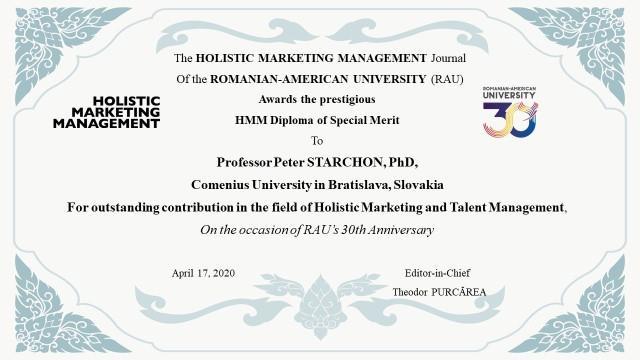

Holistic Marketing Management 54
Congratulatory letter from Professor Peter Štarchoň on the occasion of the 30th Romanian-American University Anniversary
‘
Marketing Science and Inspirations’: Overcoming Marketing Challenges


JEL Classification: Y30
The “Marketing Science and Inspirations” Journal is always confirming its valued vocation of giving its savvy, affluent and implied readers a holistic perspective on modern marketing issues. This well-known brand of the Comenius University in Bratislava, Slovakia, is continuing to generate awareness and to build lasting connections with its target audience, improving customer experience by identifying new ways to overcome marketing challenges. That is why we are witnessing our partners’ hard and smart work to provide to both current and new readers truly relevant and useful content on current business situations and key challenges faced by agile marketers, making marketing perspective happen.
Holistic Marketing Management 55
Dr. Dan SMEDESCU Associate Editor of the “Holistic Marketing Management” Journal Member of the scientific association Romanian Distribution Committee
We were happy to receive by post the new Issue 3, Volume XVII, 2022, of our Partner Journal “Marketing Science and Inspirations” , Comenius University in Bratislava, Slovakia. The new challenging issue of this valuable academic journal (addressing to academics and practitioners) covered, as usual, a wide range of interesting topics in the marketing research field, such as:
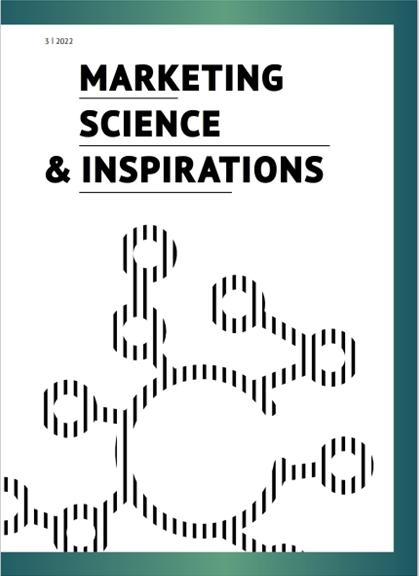
• “Trade in transformation: The example of the textile business as an innovator of urban life-style. ”
The author Bernd Hallier highlighted the role of textile business as an exemplary case for the permanent transformations of the consumers’ life-style (consumers’ demand being empowered by the potential interconnectivity with the internet and smartphones), one hand, and for the efficiency improvement of the textile traders (thanks to the electronic control of the whole supply chain), on the other hand.
• “Managerial performance in the conditions of selected local government offices ”
The authors Michal Lukáč and Ján Ganobčík approached the topic of managerial performance and its management as beneficial for employee development, and focused on the interaction between performance management and administrative authority, in order to streamline the managerial performance of different offices by deriving propositions and proposing measures accordingly. They identified, among the primary areas where change is
Holistic Marketing Management 56
needed, ambiguity in the strategy and plan, as well as delayed feedback processes and limited behavioral incentives.
• “Analysis of attitudes to the principles of social responsibility and their application in the practice. ”
The author Pavol Križo analyzed the principles of social responsibility from the point of view of attitudes towards these principles and their application, identifying differences, and grouping organizations into several groups with regard to the identified differences, categorizing these groups (as pragmatically responsible, truly responsible, manifestly irresponsible, and false responsible) on the basis of reviewing the assessment of both the importance, and application of the principles of social responsibility. They made specific recommendations (that applied mainly to those companies whose level of identification with the above-mentioned principles is high and in line with their internal convictions, without excluding other situations).
• “A thematic and sentiment analysis of the relationship between religion and purchase behavior. ”
The author Alexandru Bosînceanu focused on the analysis of the purchase behavior of an air purifier for religious and non-religious consumers, taking into account the urgent need for better understanding the relationship between consumer behavior and religion. He identified important themes (based on thematic and sentiment analysis), also revealing subtle nuances.
• “Building-as-a-Service: The opportunities of service-dominant logic for construction.”
The authors Adrian August Wildenauer and Josef Basl focused on what ServiceDominant Logic (SDL) in combination with Building Information Modelling (BIM) could offer to the industry and discusses the term Building-as-a-Service (BaaS) from an SDL perspective. They revealed the opportunities existent if buildings are not considered as amalgamation of materials and goods but as a service model.
This new issue of the “Marketing Science and Inspirations” Journal also included other sections such as:
▪ “Marketing Briefs” : Pavel Štrach –“Promotional items: Lasting memory of right and wrong”;
▪ “SHORT COMMUNICATIONS” :
Holistic Marketing Management 57
“FLEMA Media Awards 2022”;“An announcement of the 10. year of the Young Dolphin contest”;“An announcement of the most effective advertisement EFFIE Awards contest”. ▪ “REVIEW”, Ladislav Mura, “Hanuláková, Eva et al.: Marketing. Tools, strategies, people and trends.” ▪
DICTIONARY OF USEFUL MARKETING TERMS
, Dagmar Weberová
It is well-known that on the occasion of celebrating the 30th Anniversary of the Romanian-American University (RAU), “Holistic Marketing Management” Journal (HMM) was awarding an HMM Diploma of Special Merit to Professor Peter Štarchoň, for outstanding contribution in the field of Holistic Marketing and Talent Management And we always remember with pleasure that the Editor-in-Chief of the “Marketing Science and Inspirations” Journal – Professor Peter Štarchoň, Faculty of Management, Comenius University in Bratislava, Slovakia – is also a Member of the Editorial Board of both the “Holistic Marketing Management” Journal, and of the “Romanian Distribution Committee Magazine”.

It is also our honor and pleasure to remember both the significant meeting in Koln, Germany, in 2011, on the occasion of the working meeting of the European Retail Academy (ERA).
Holistic Marketing Management

58
“
”
.









































